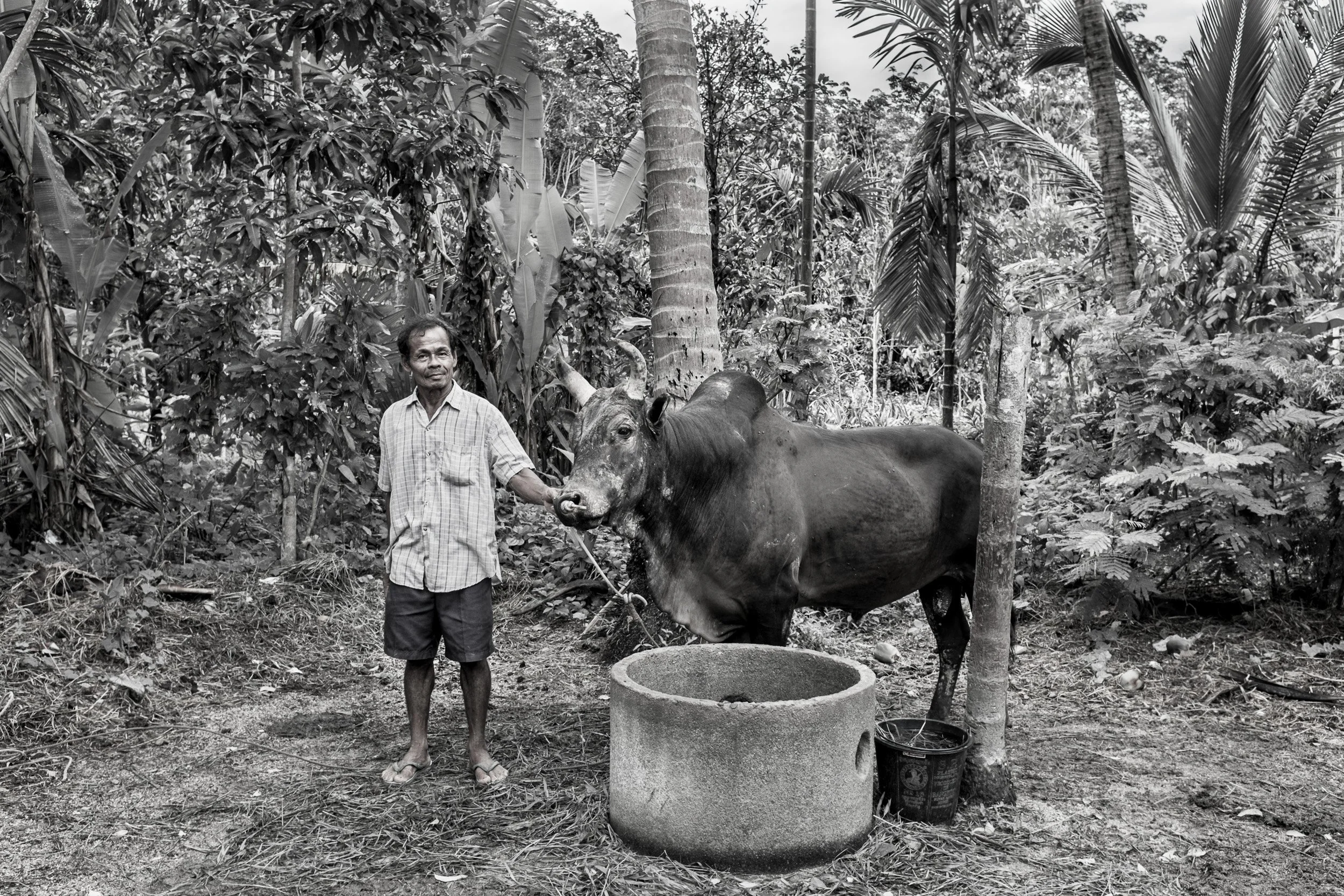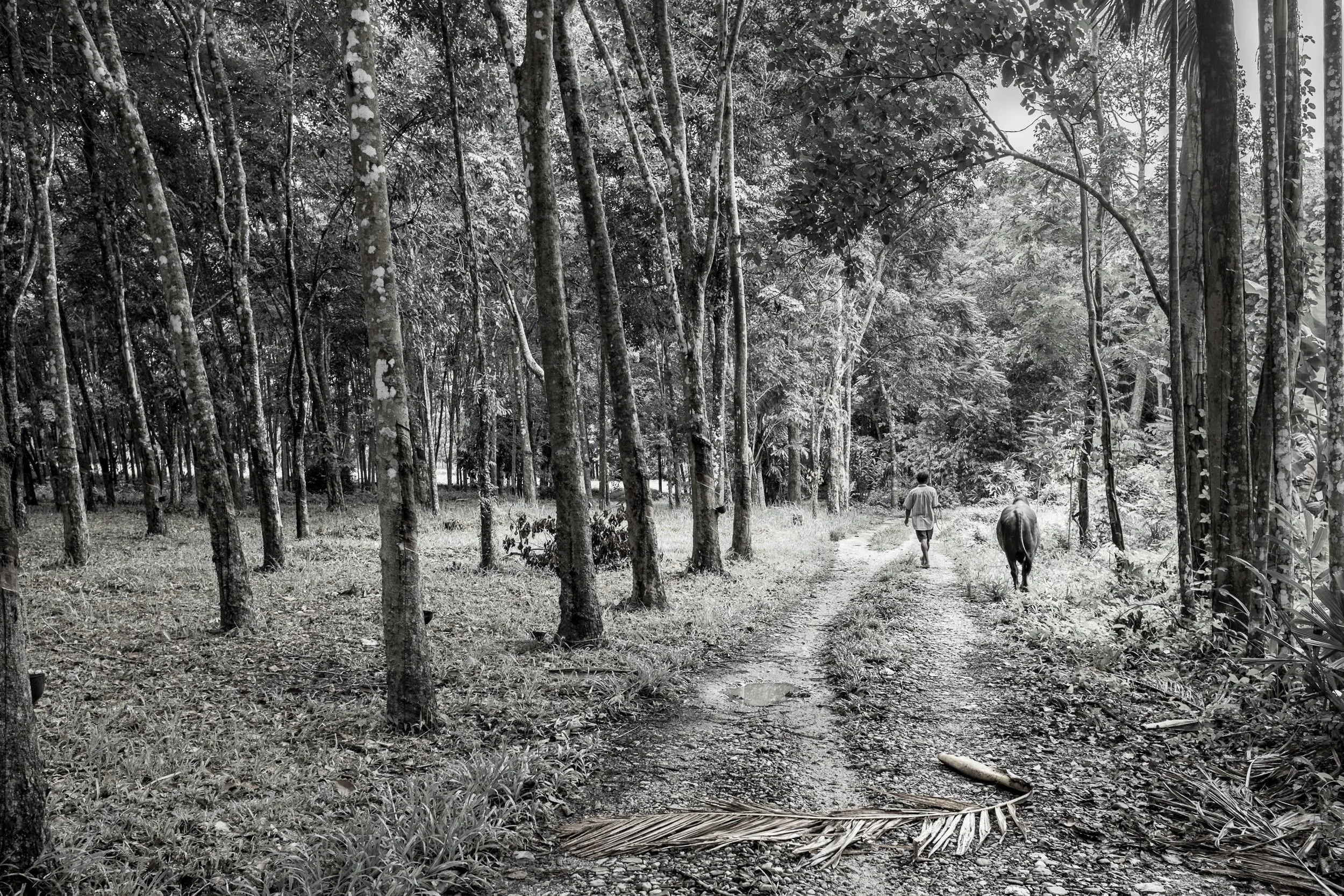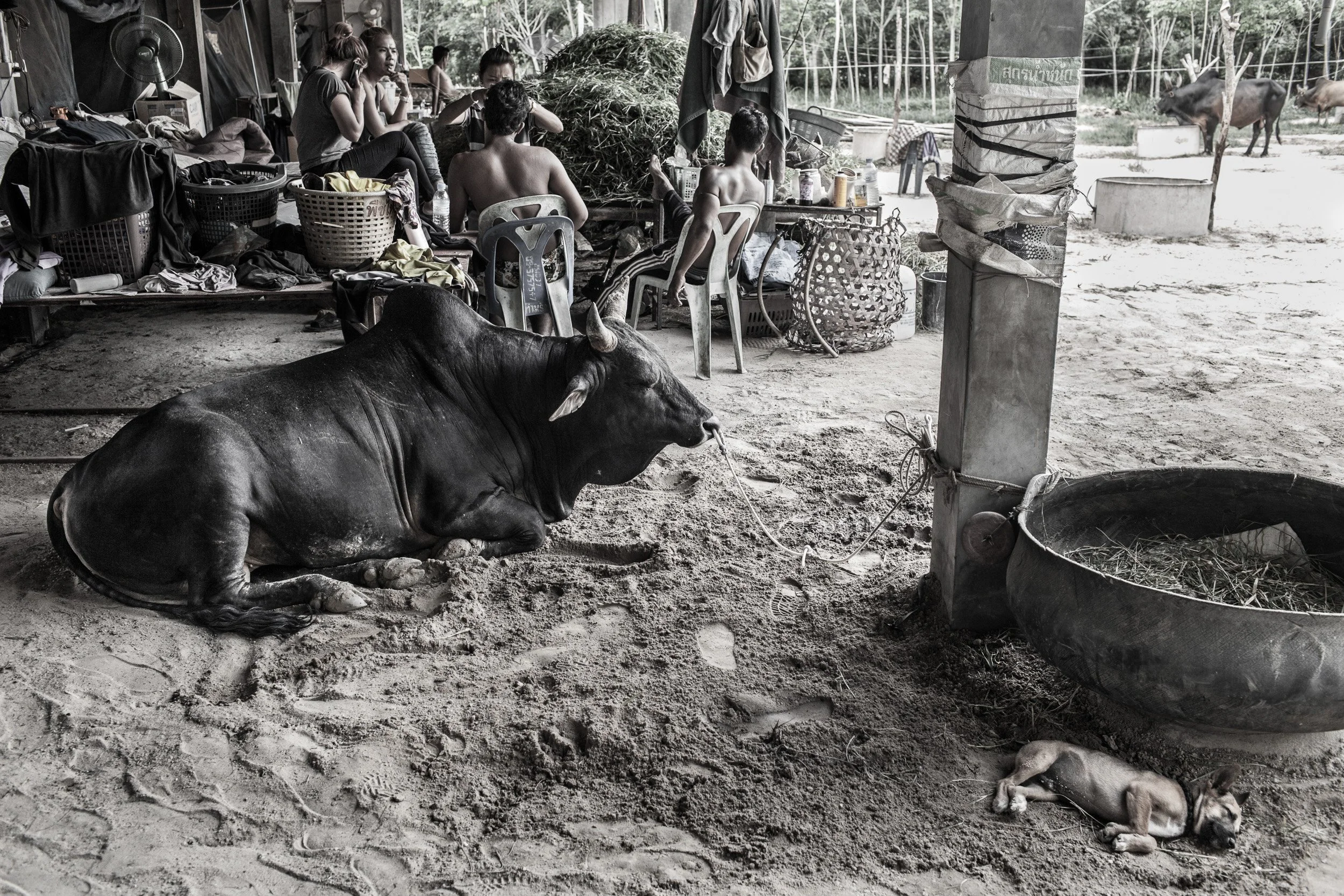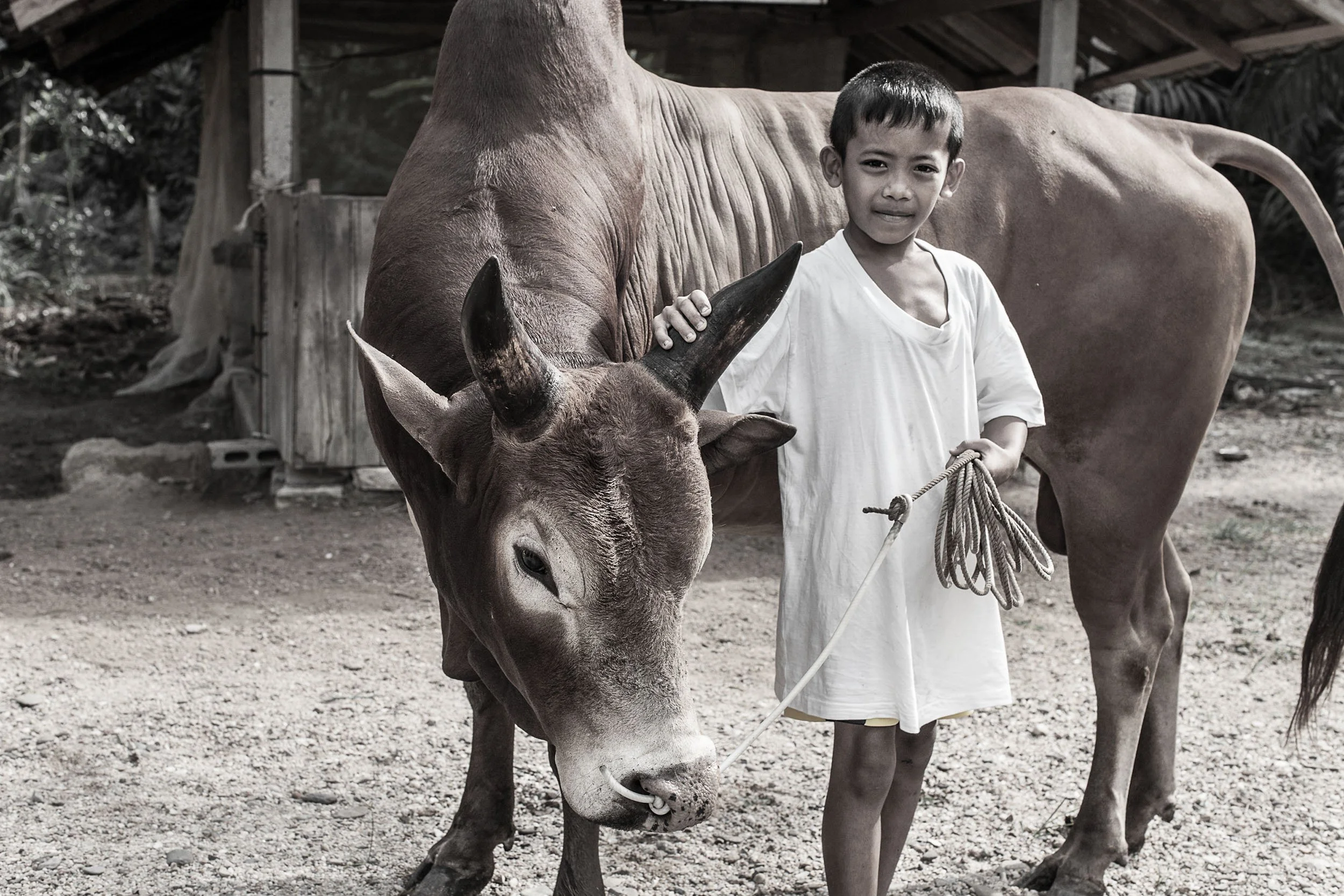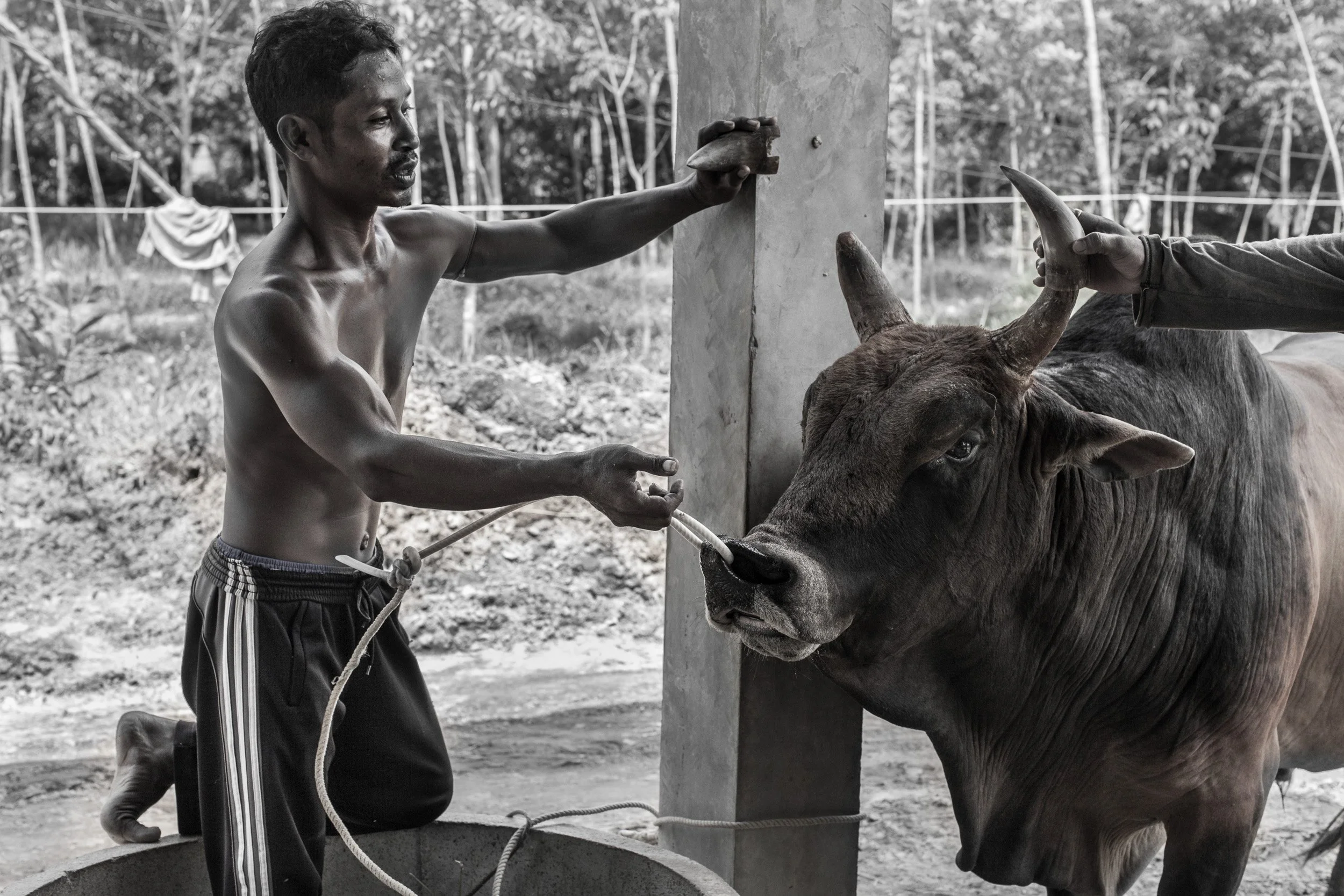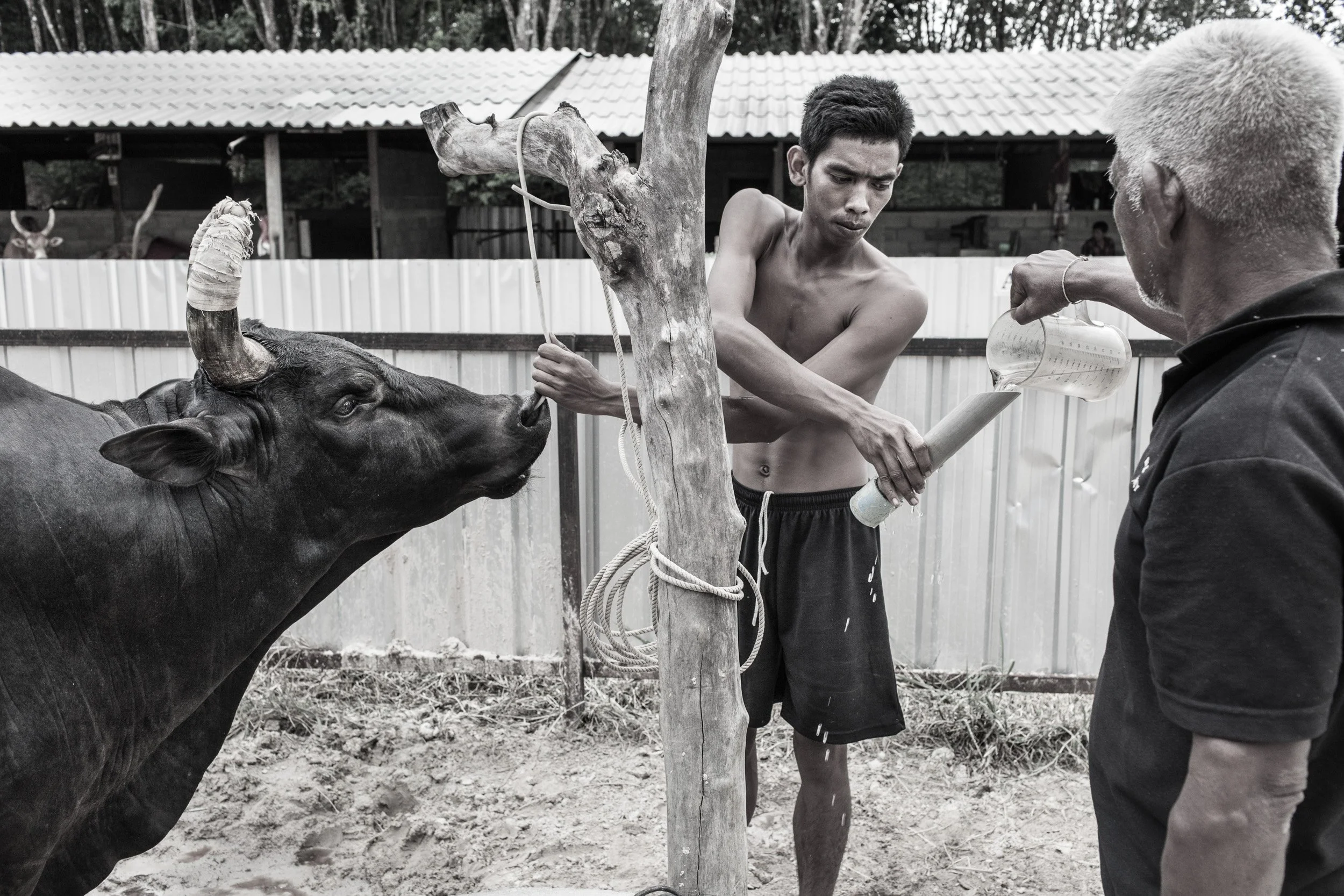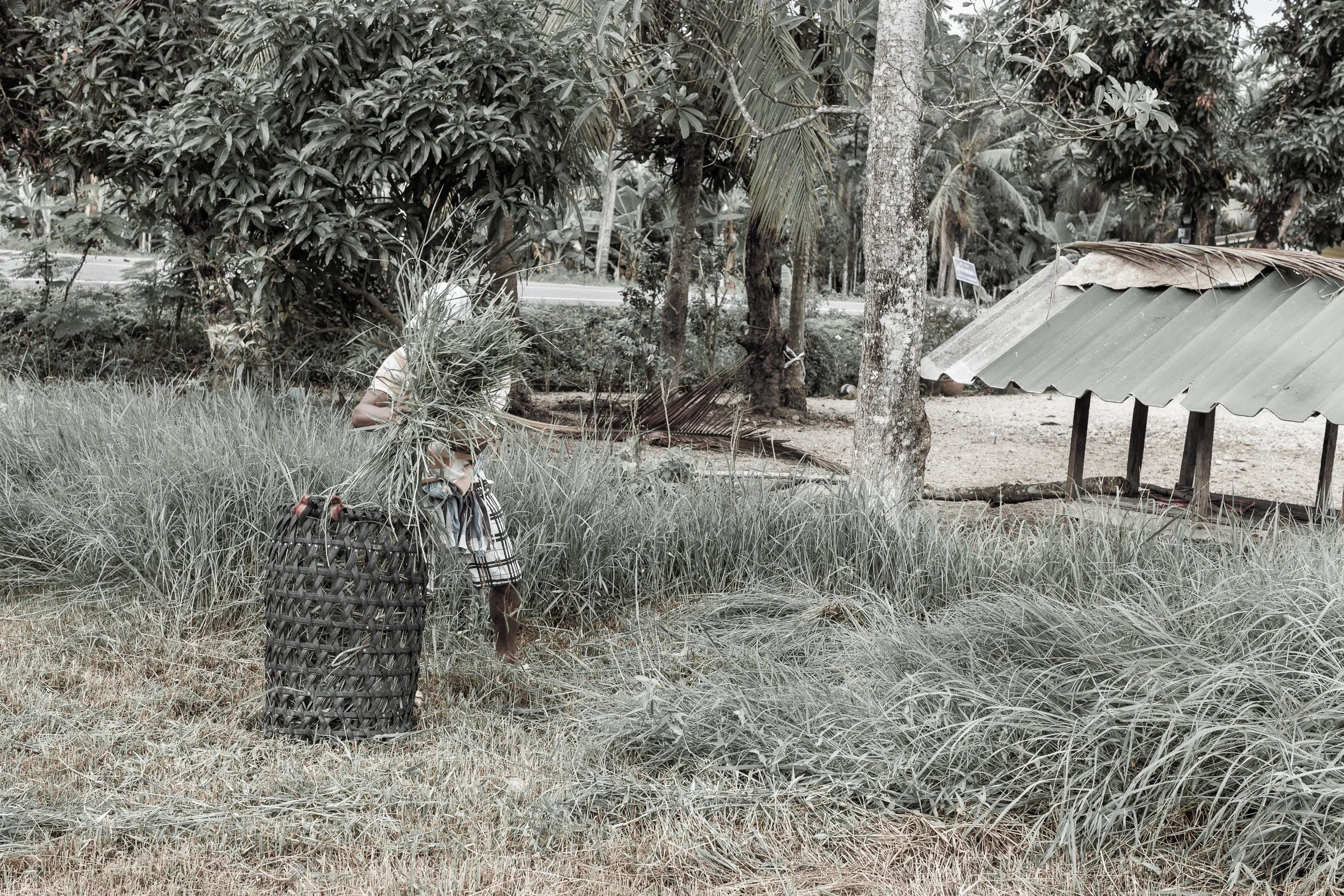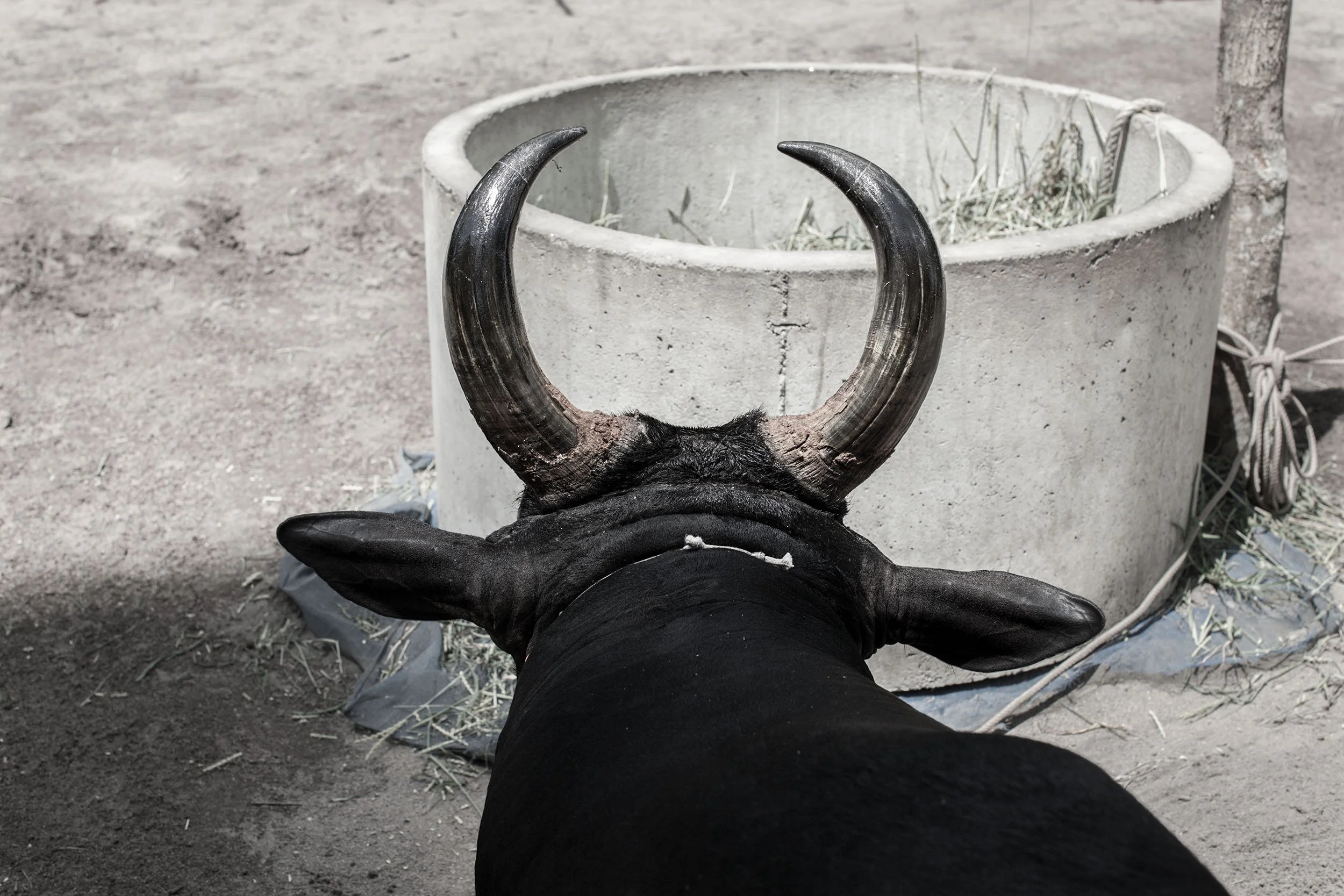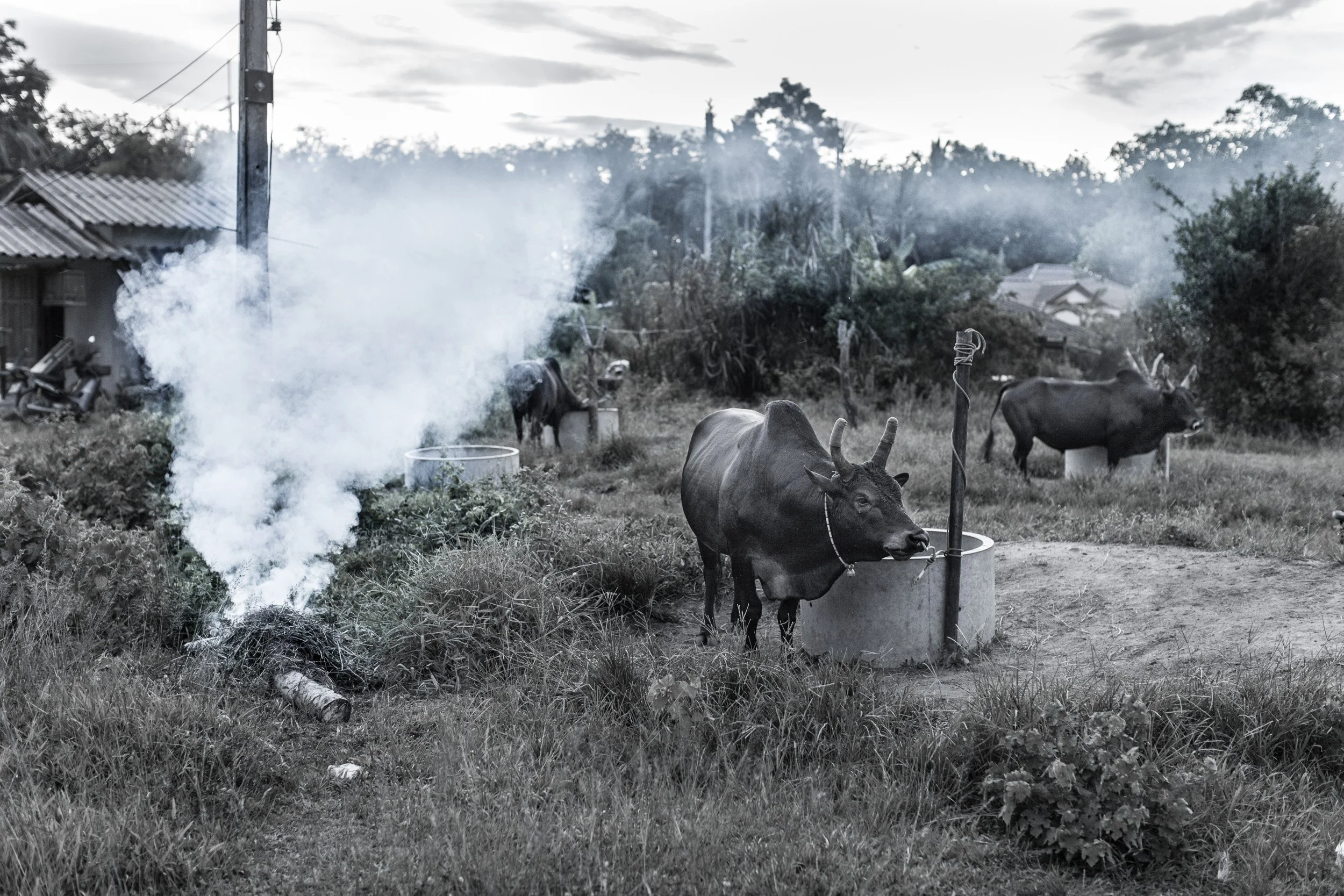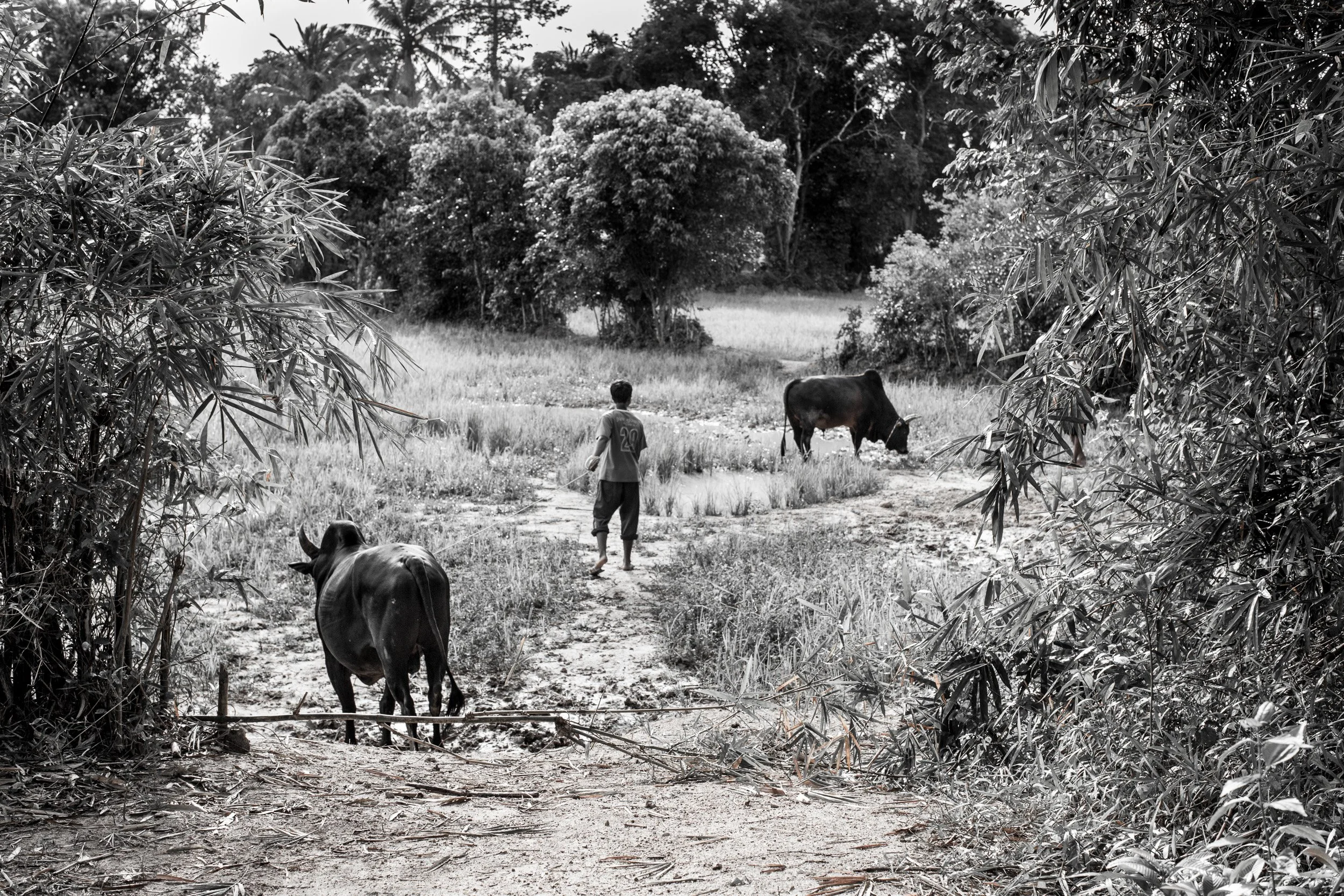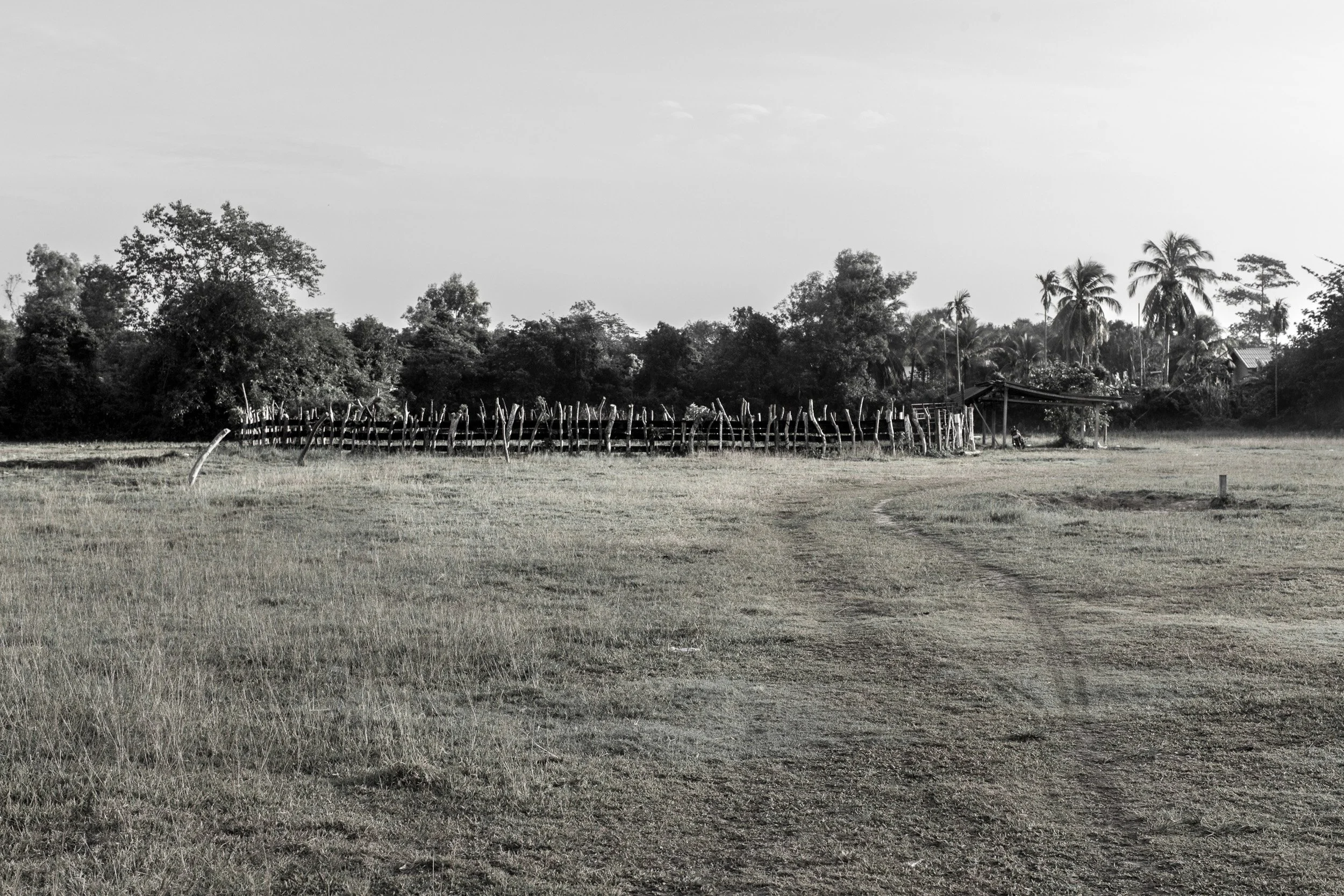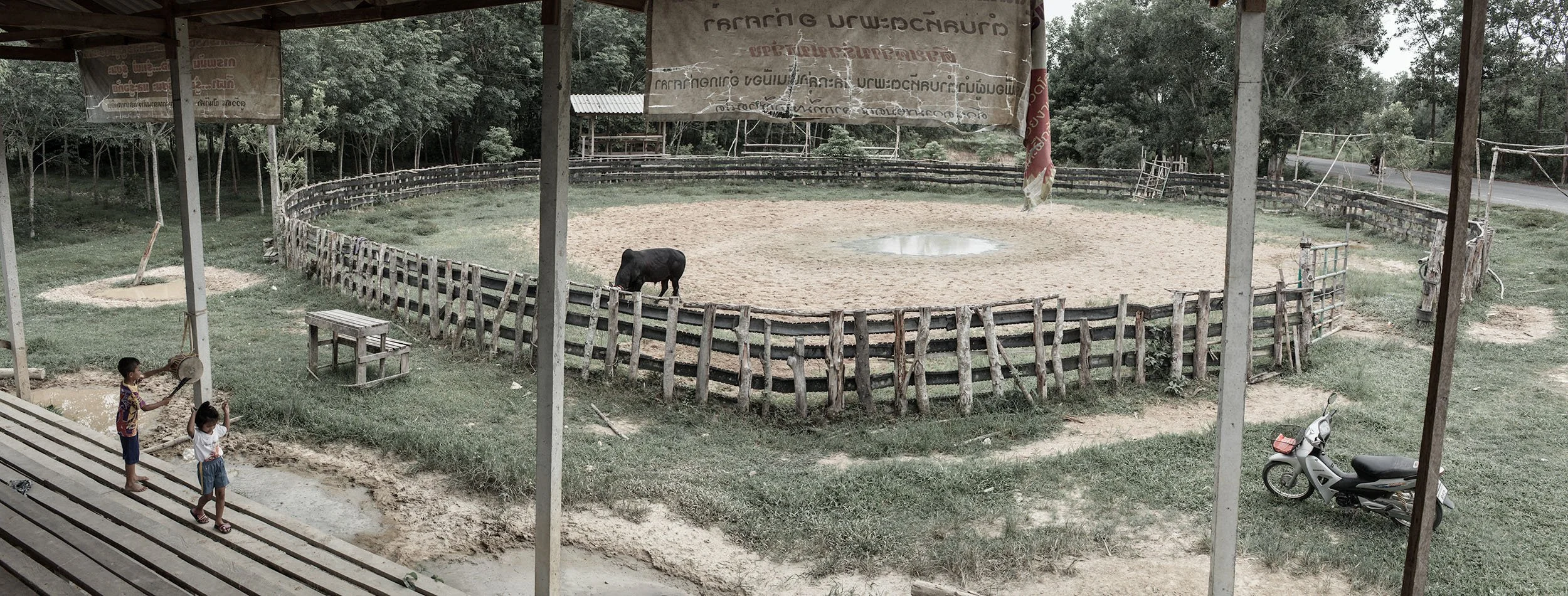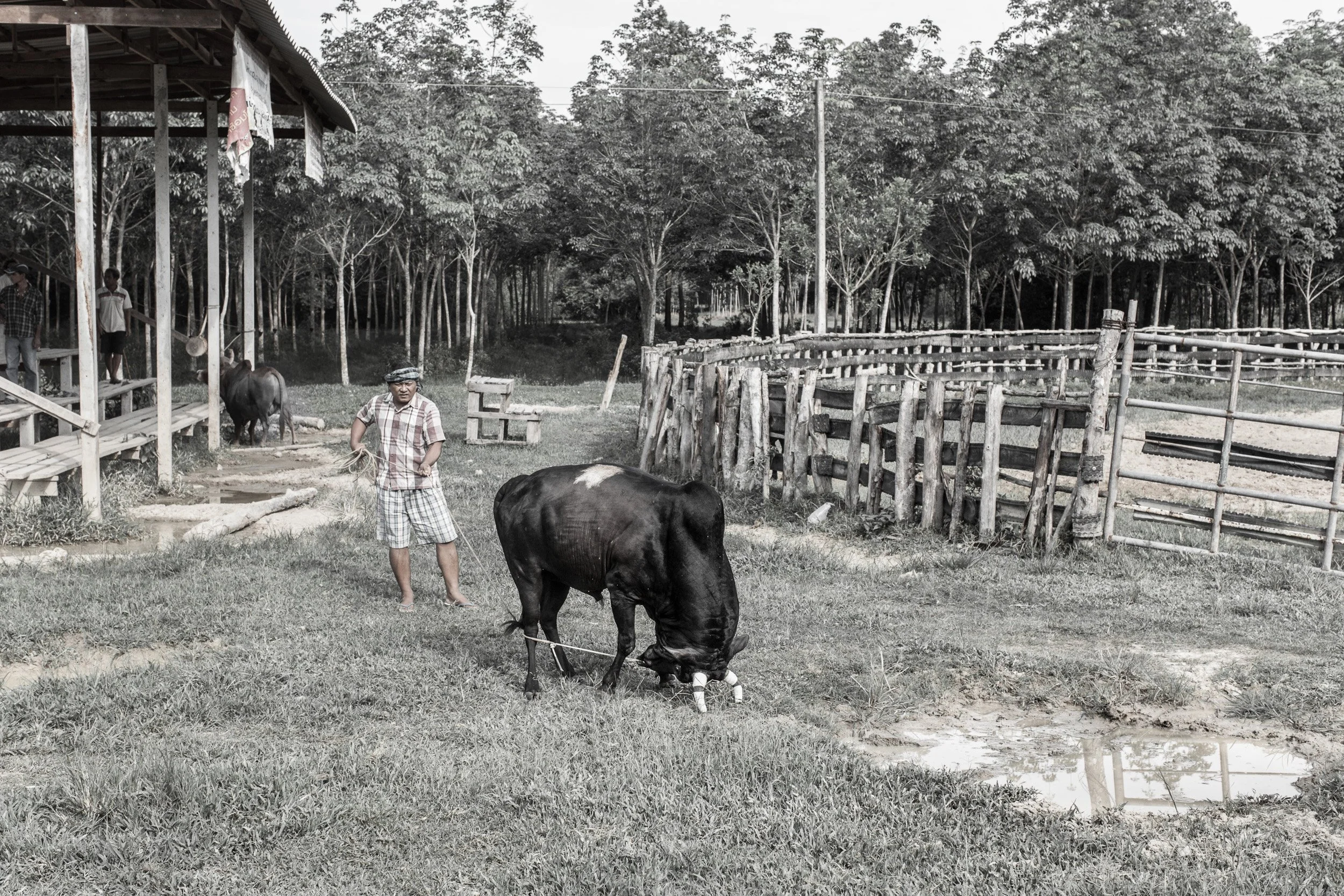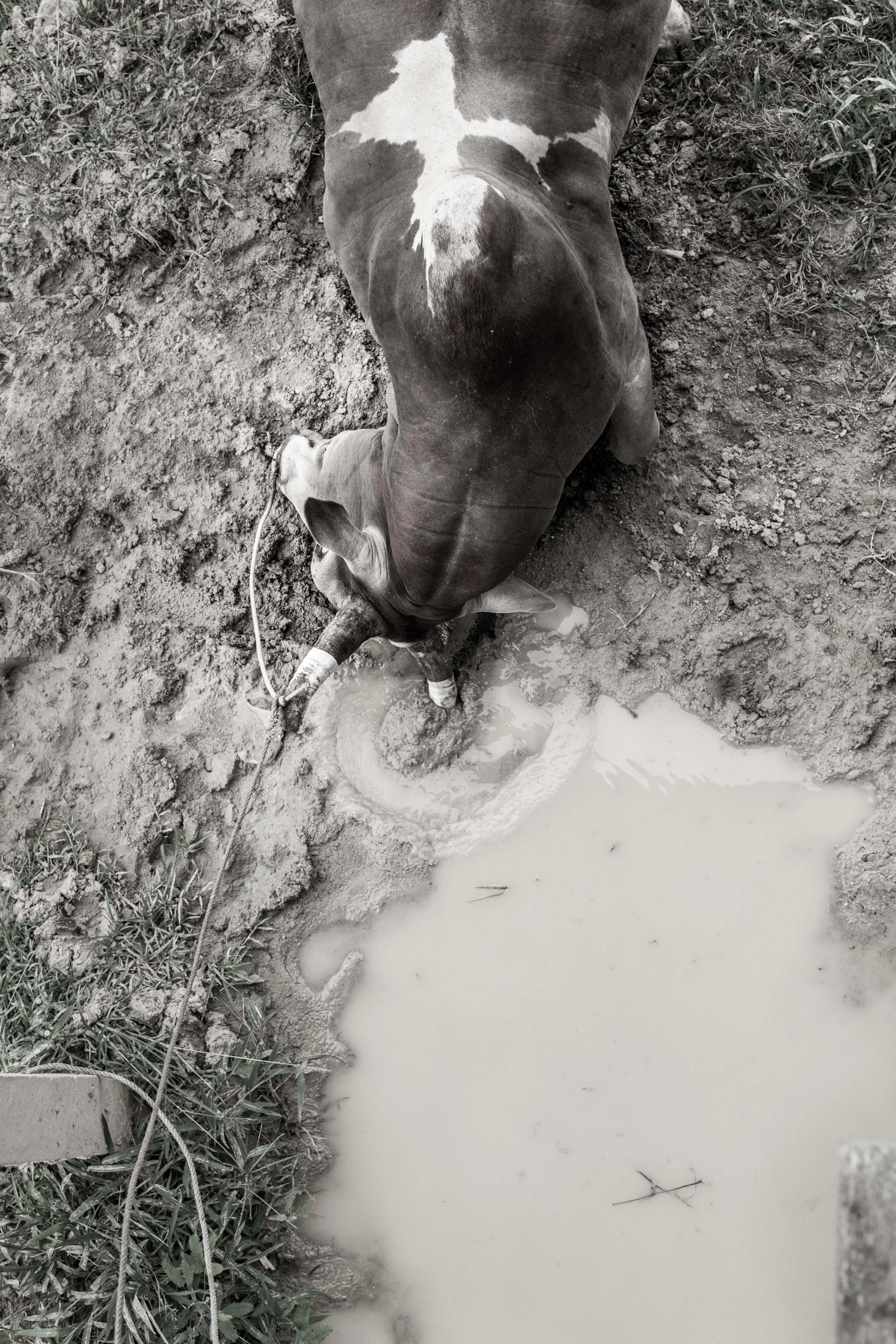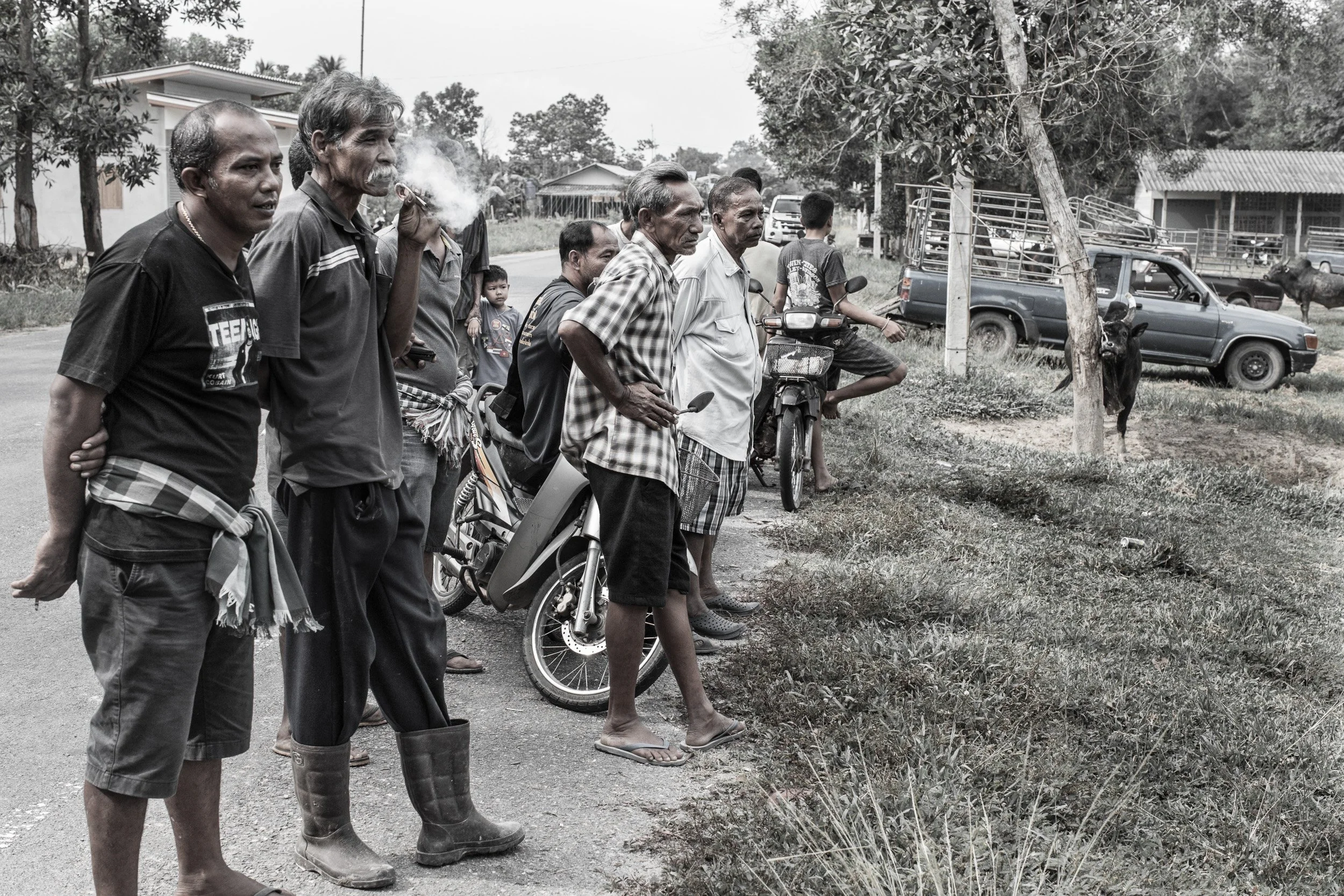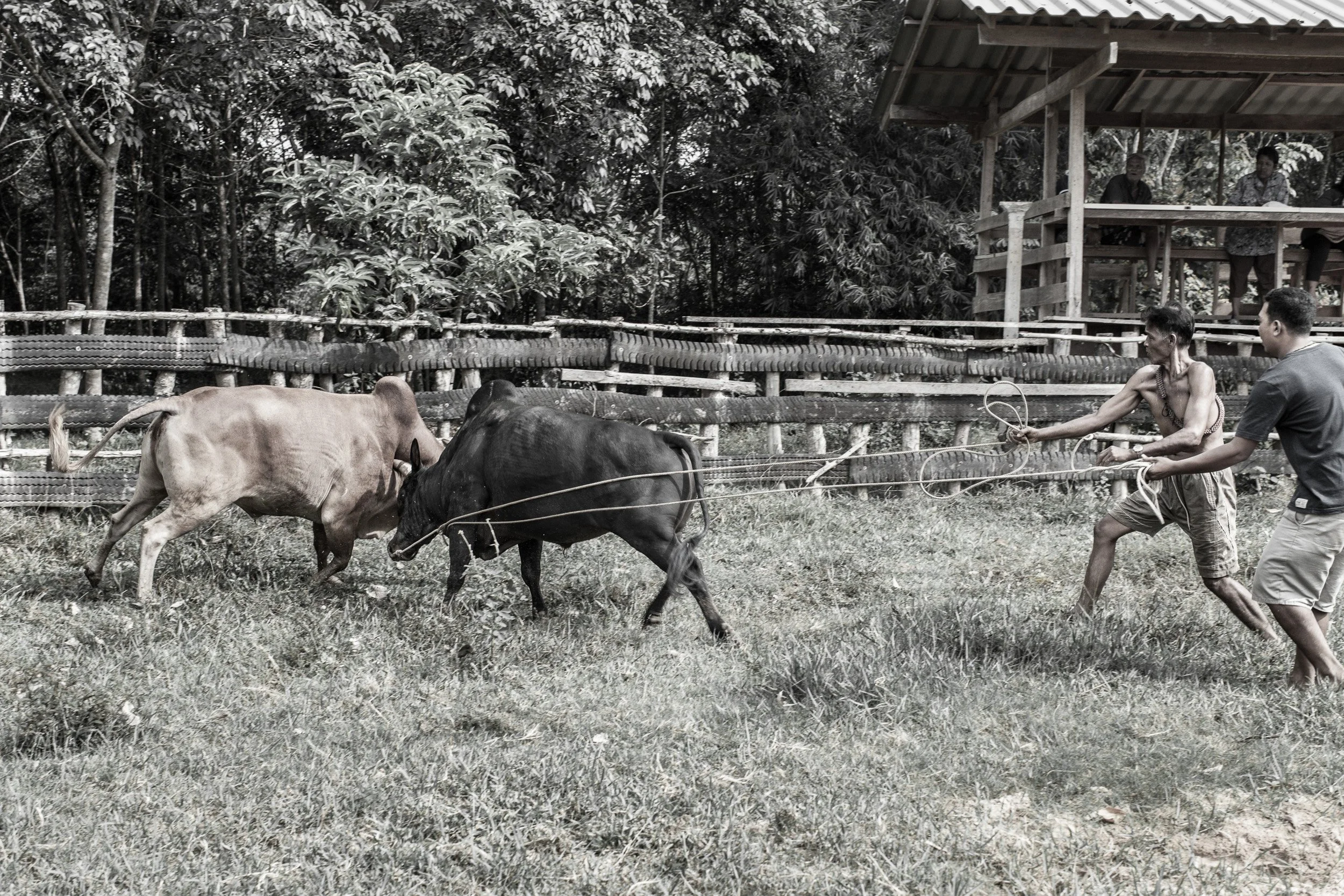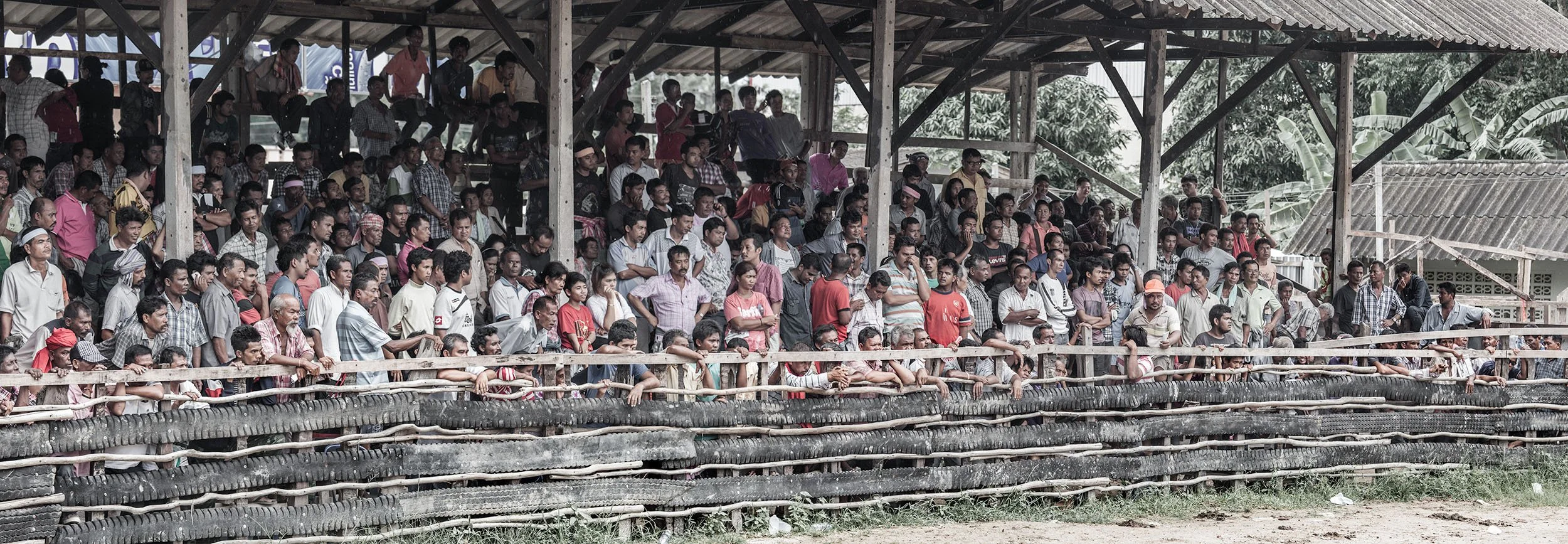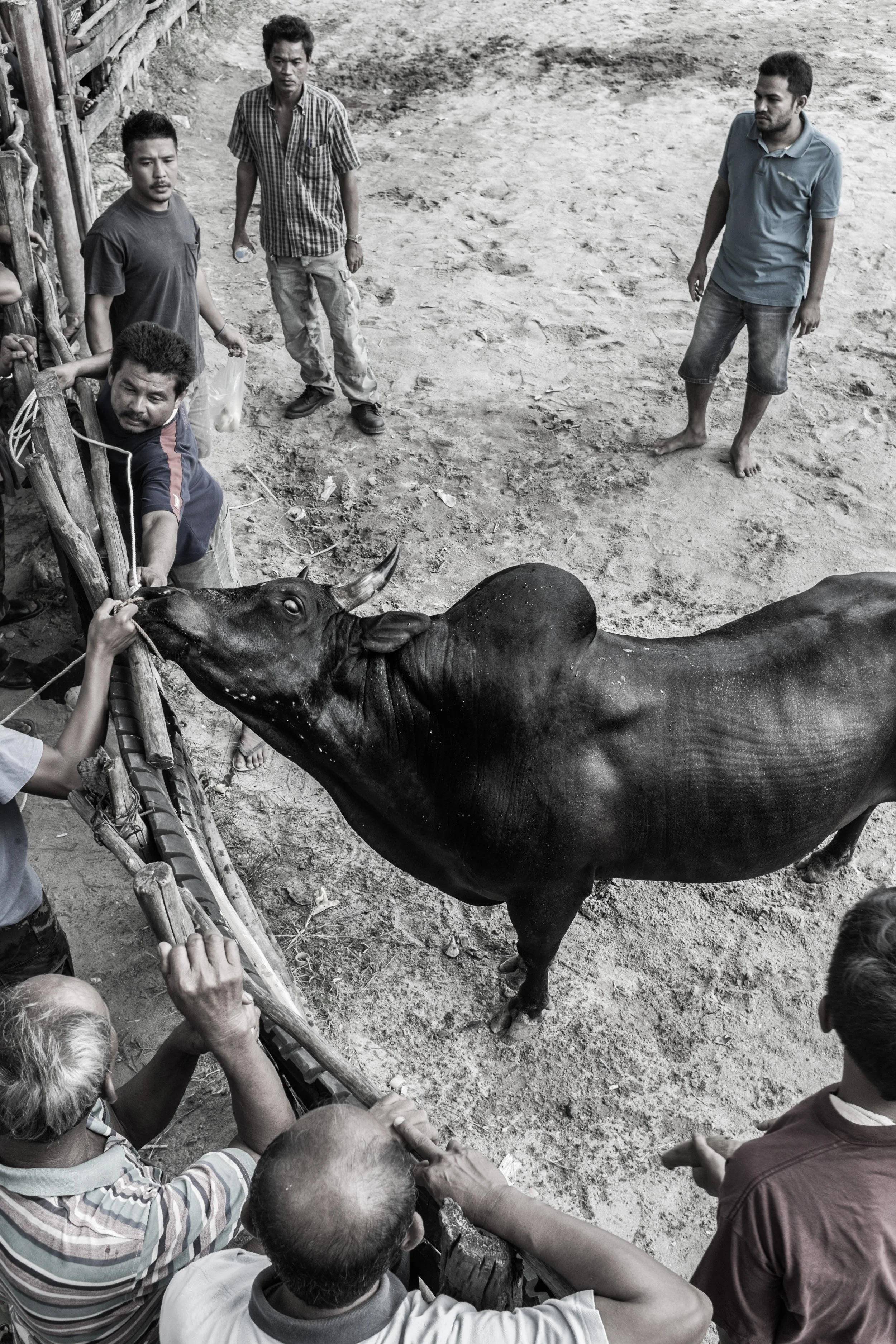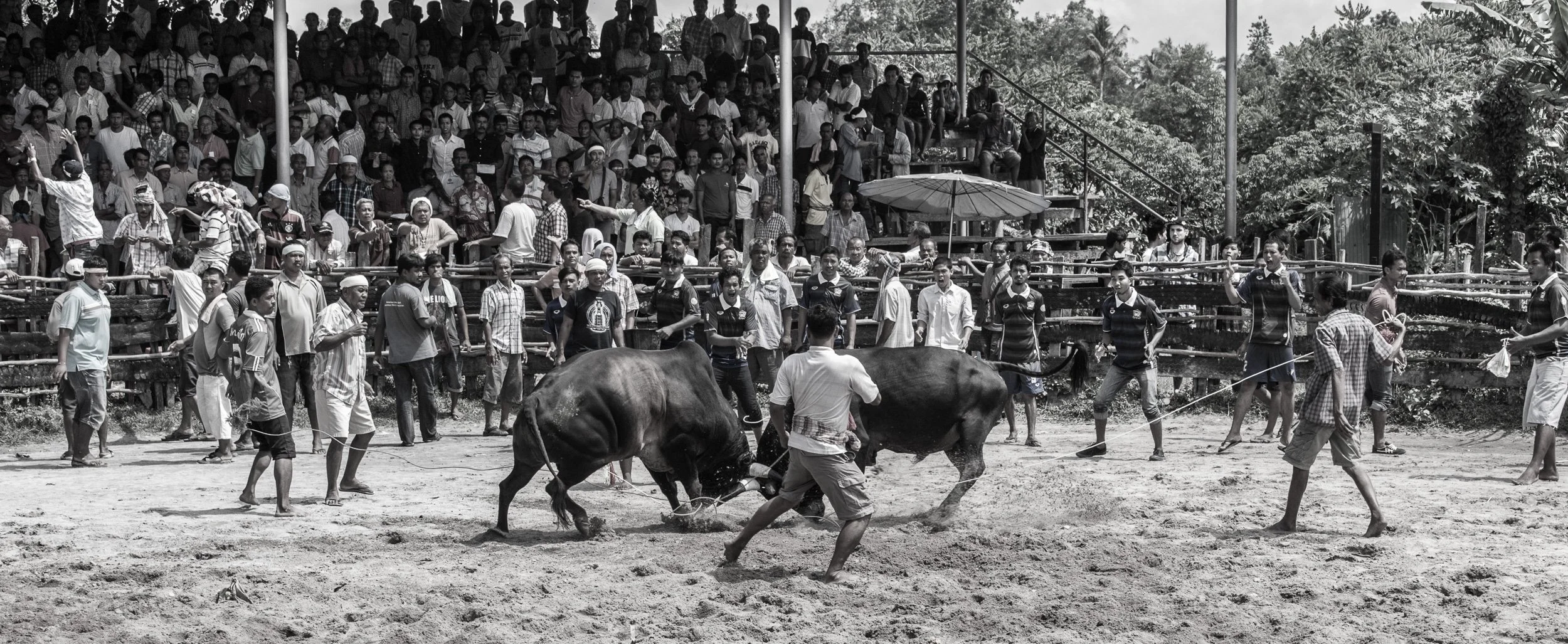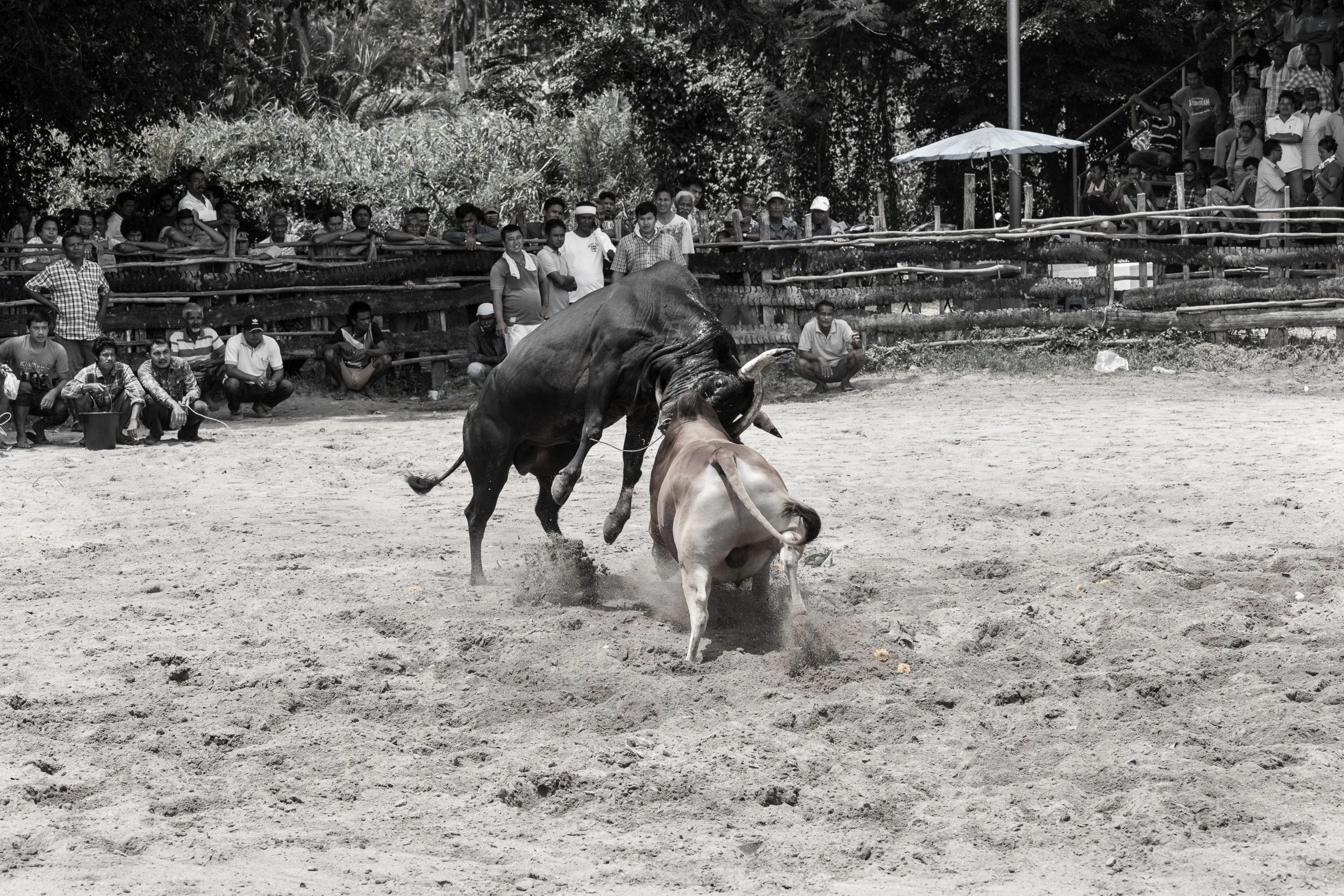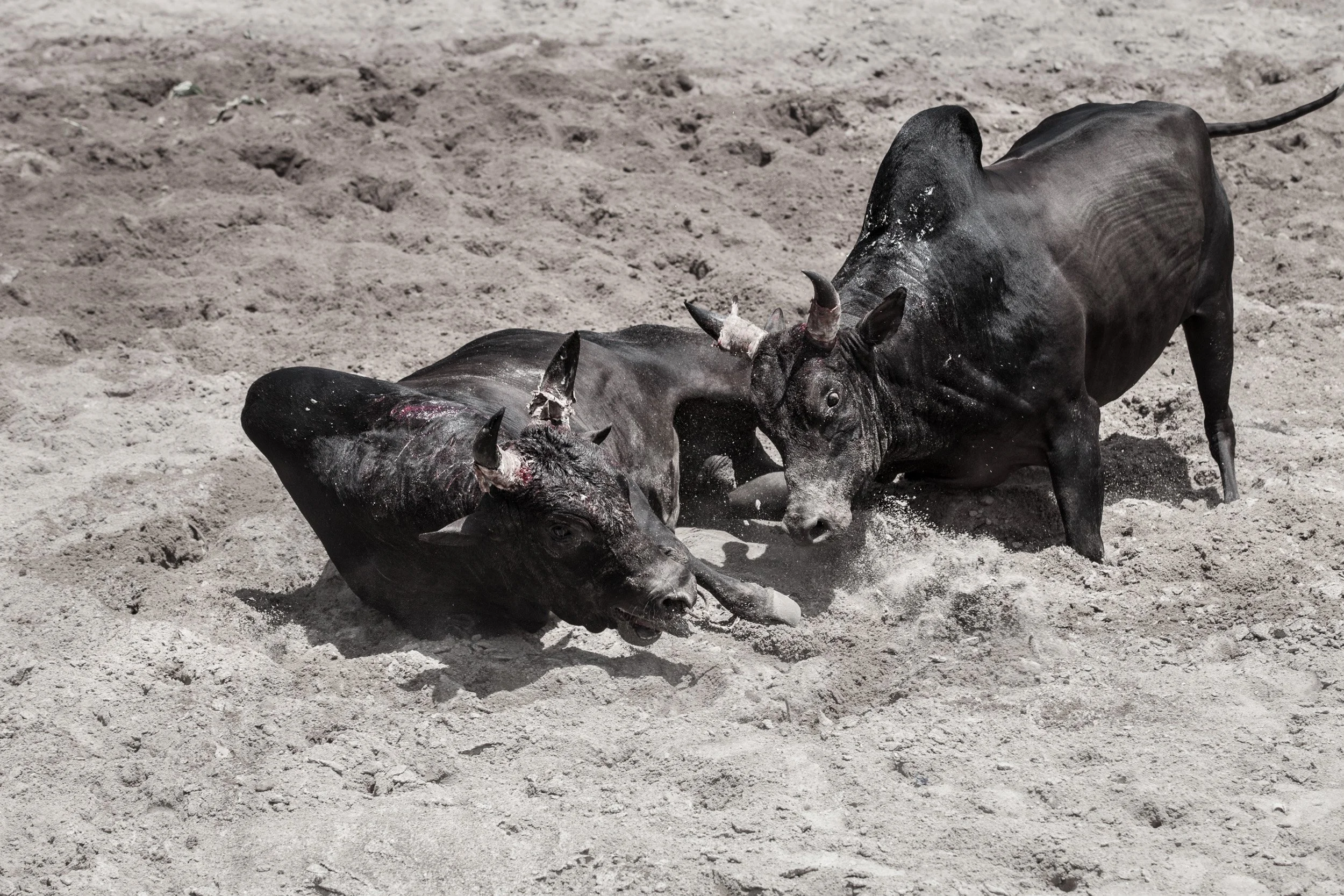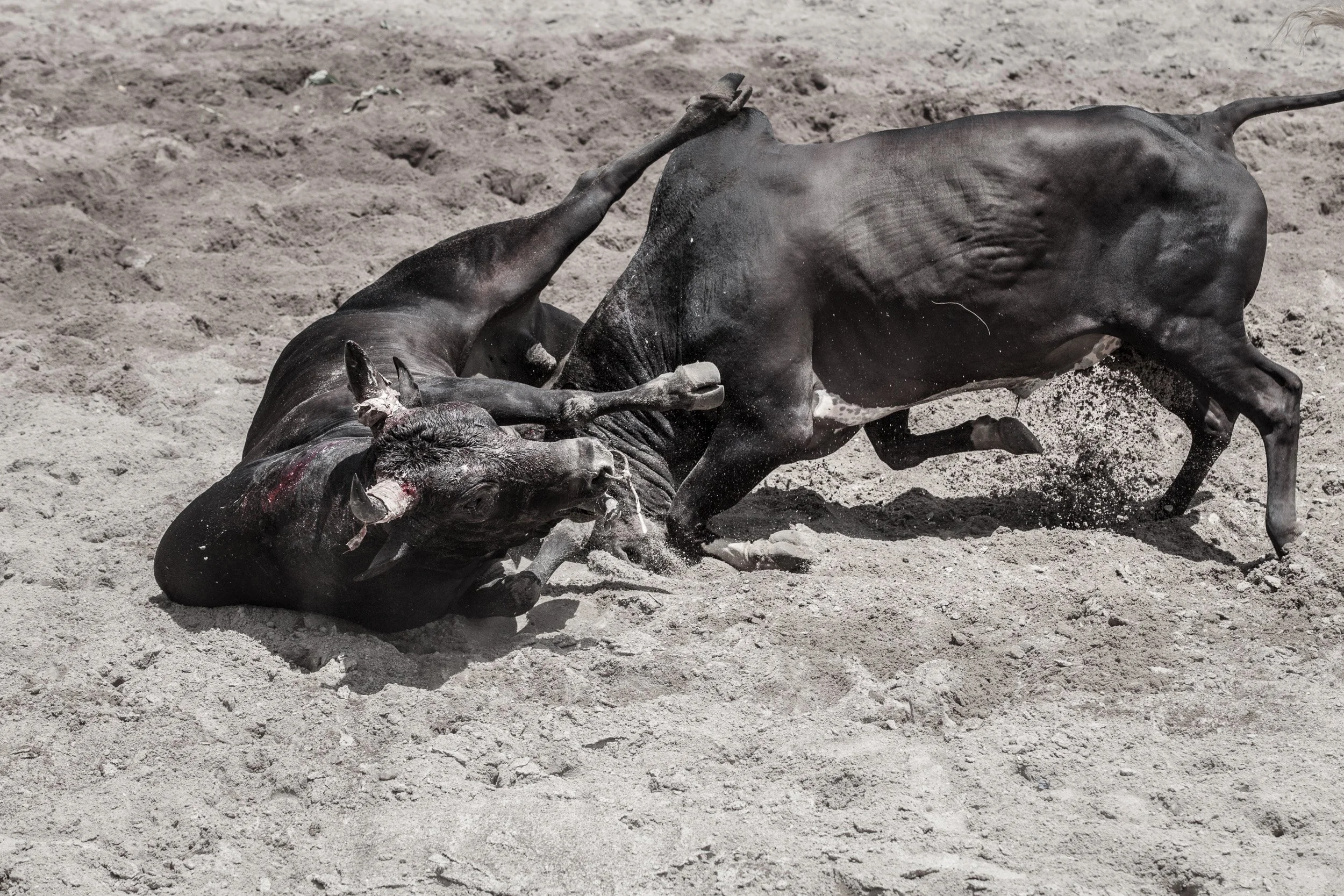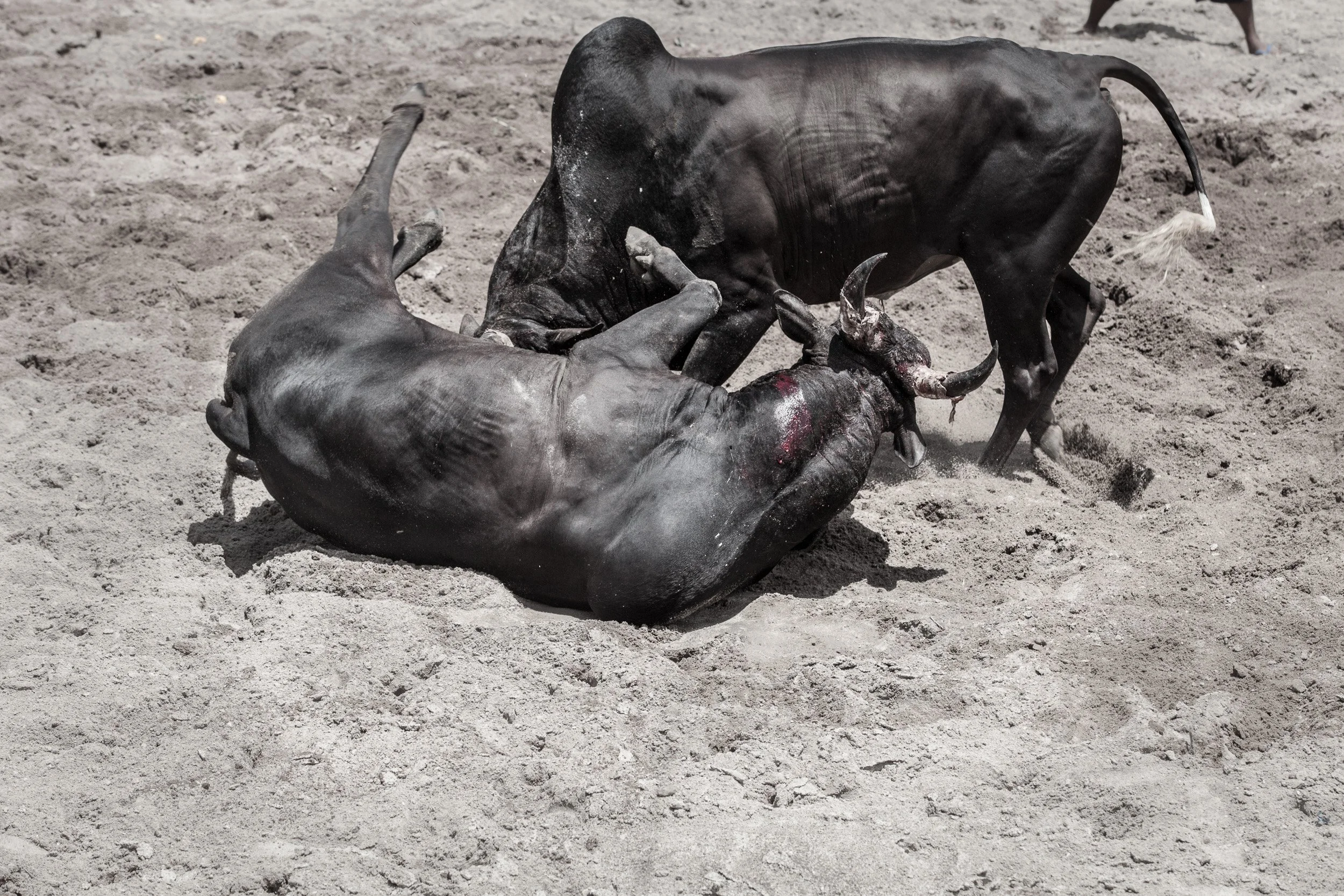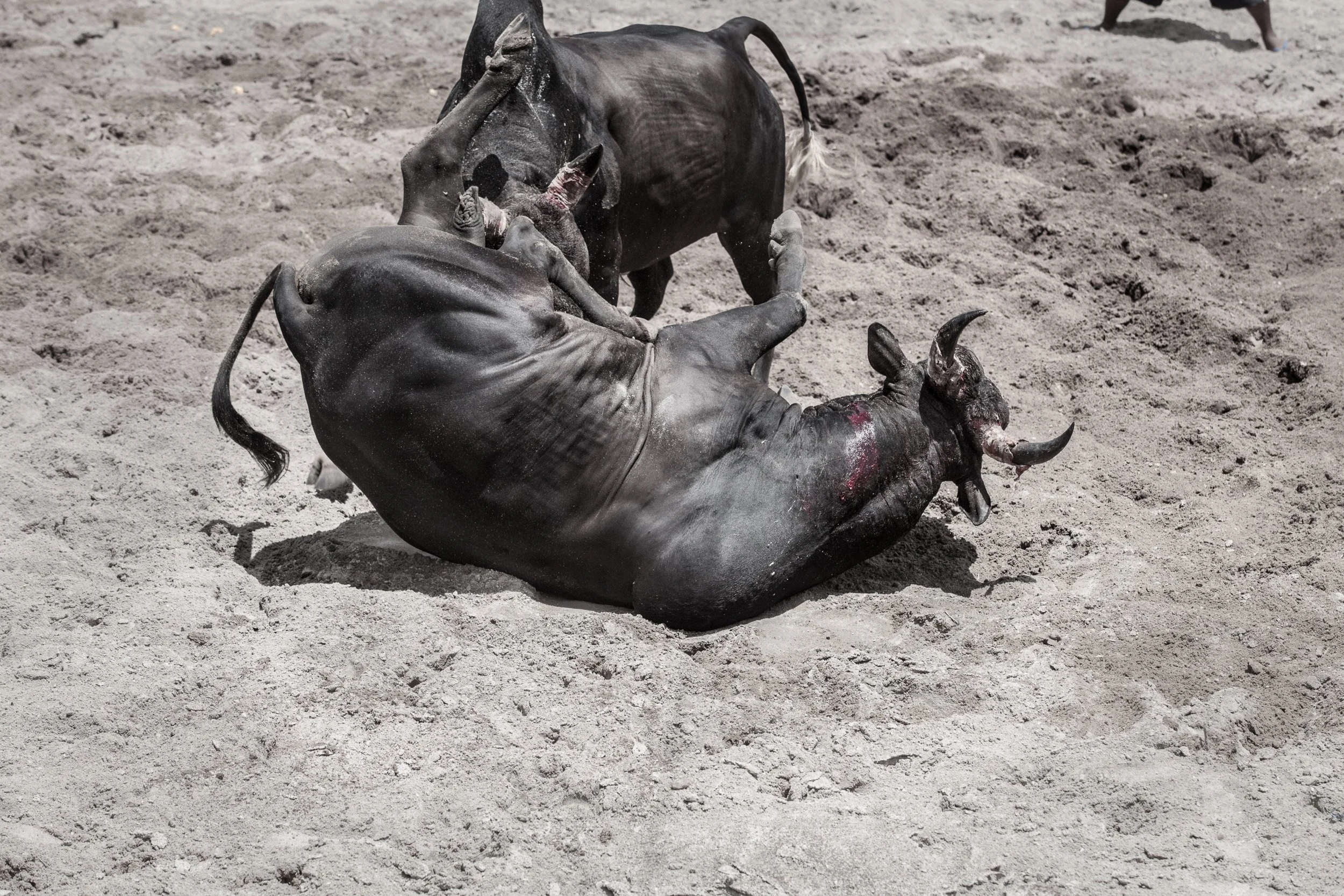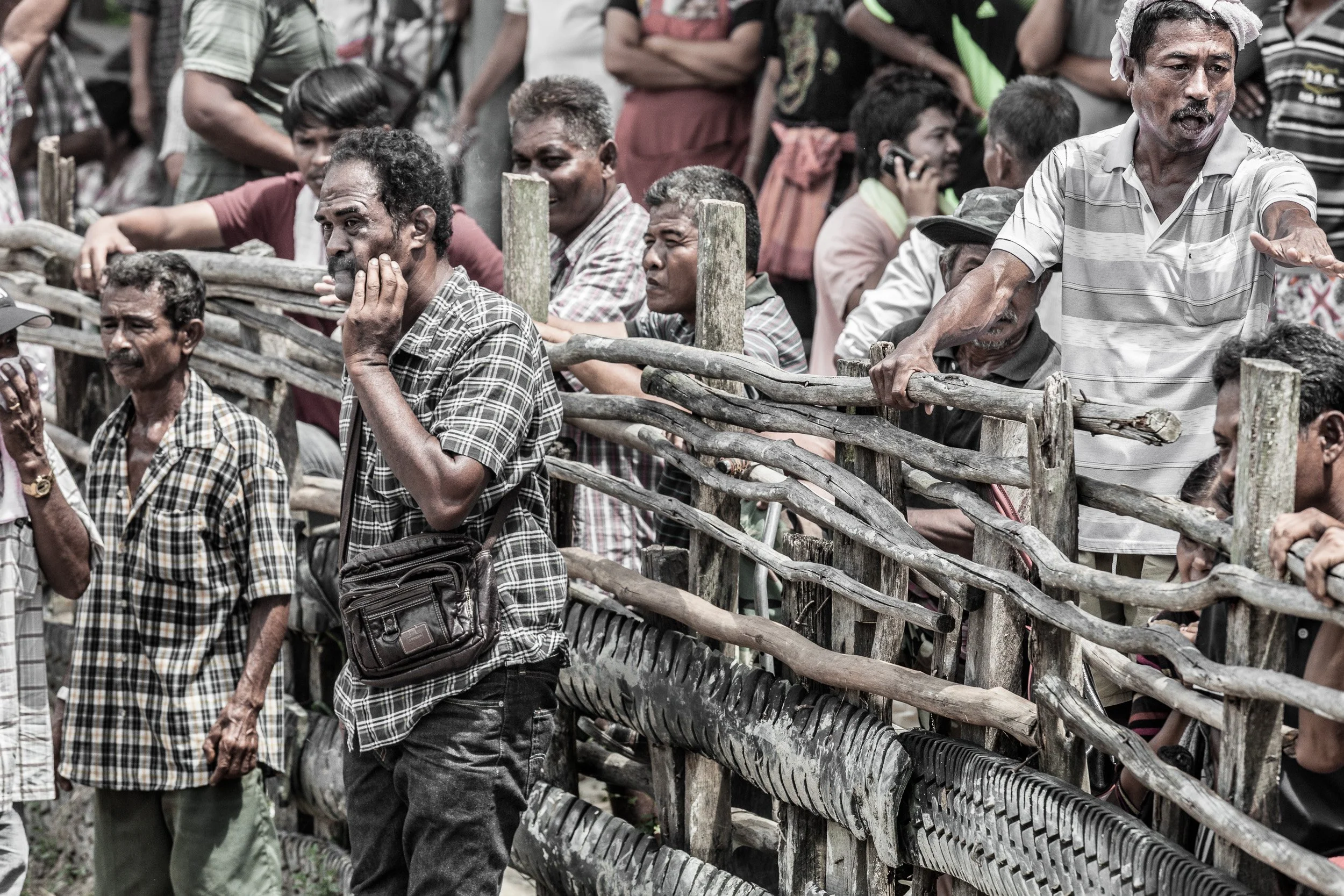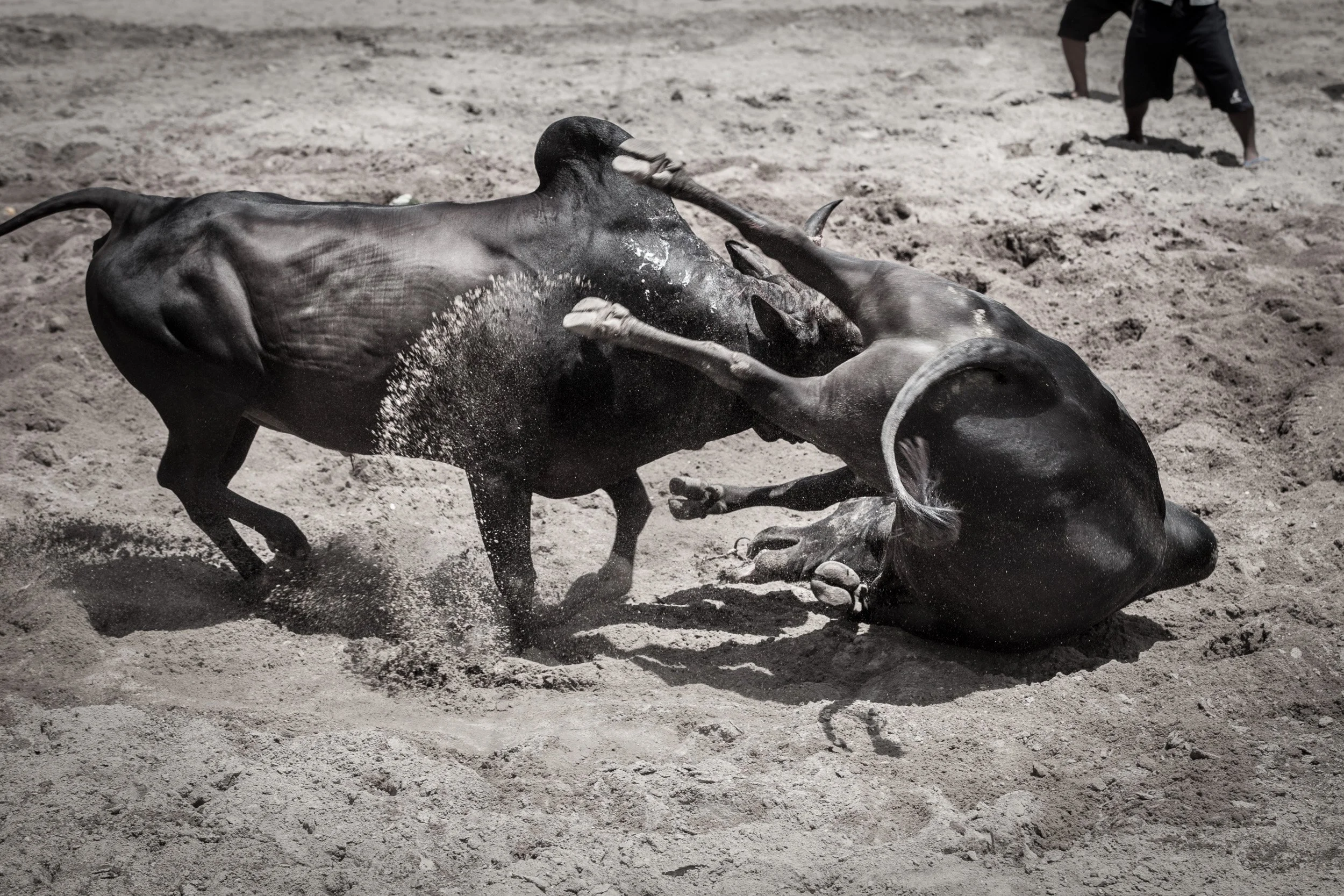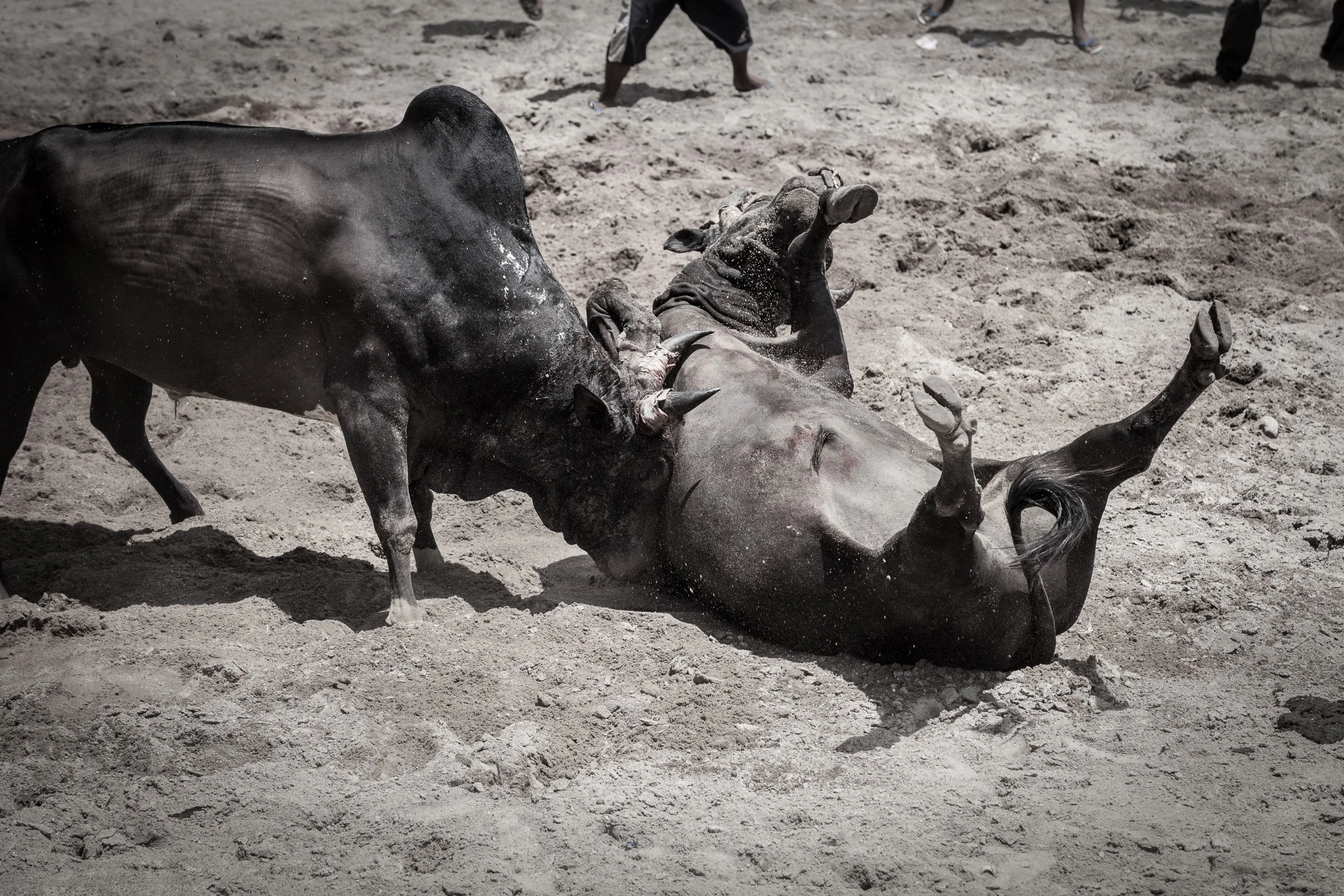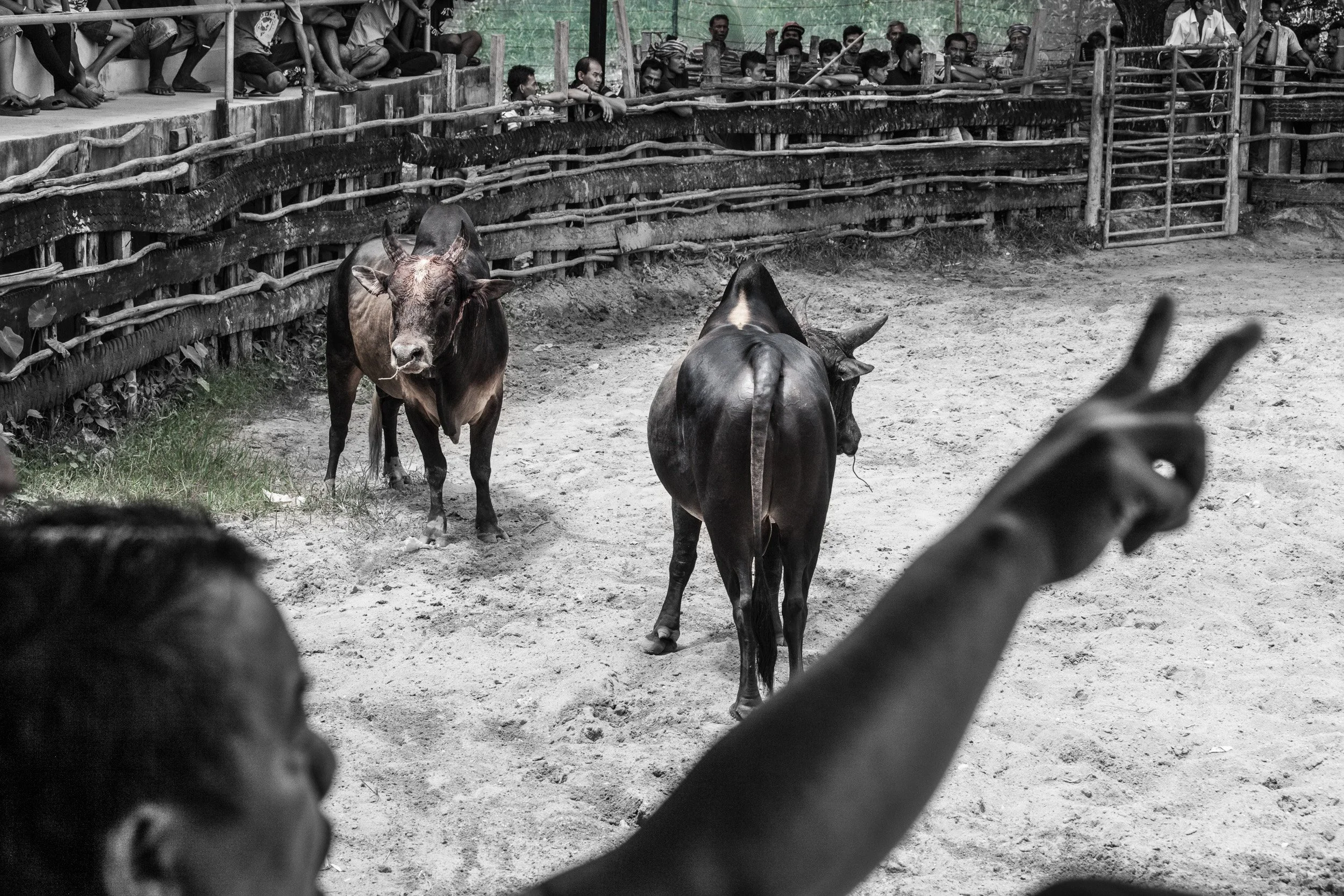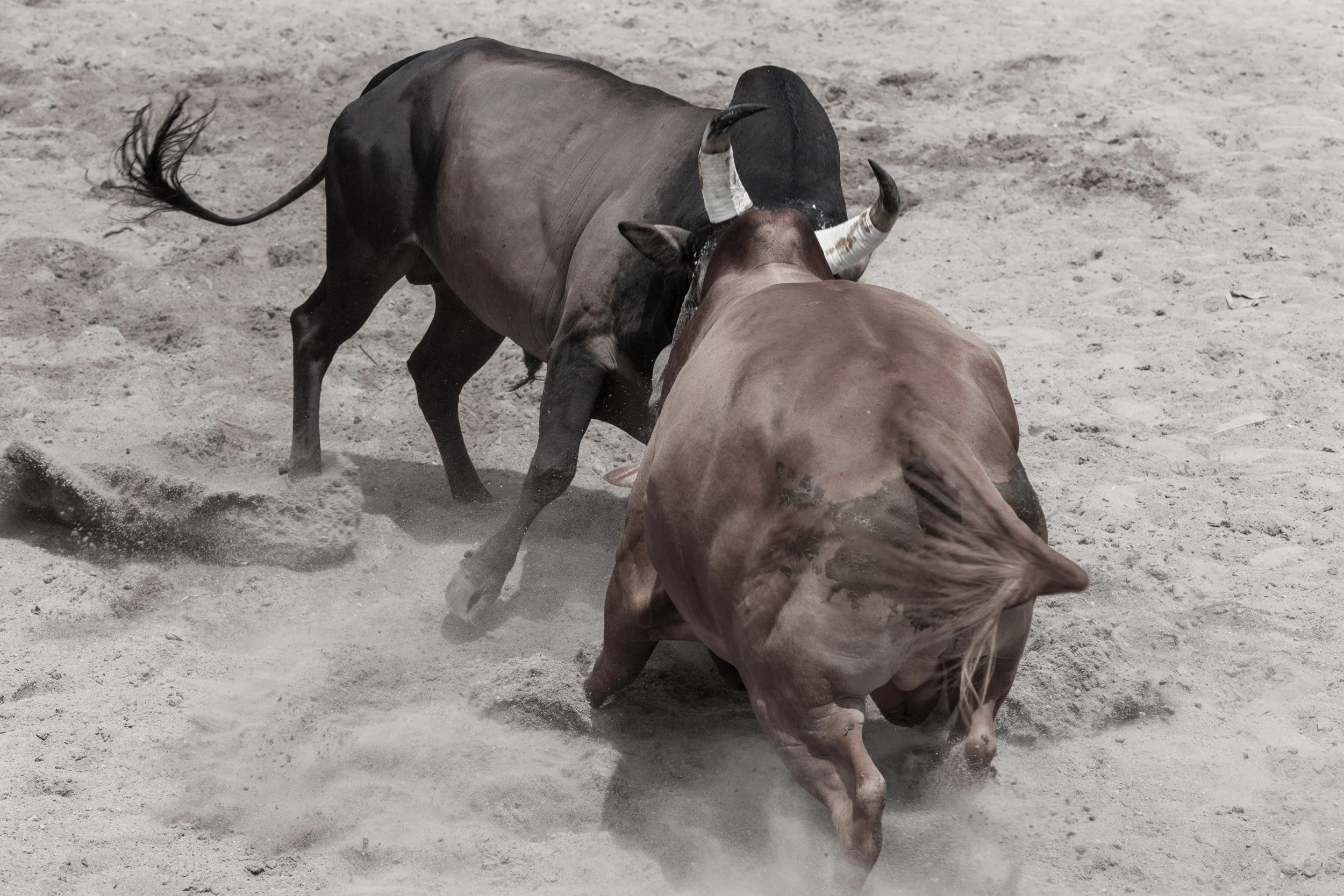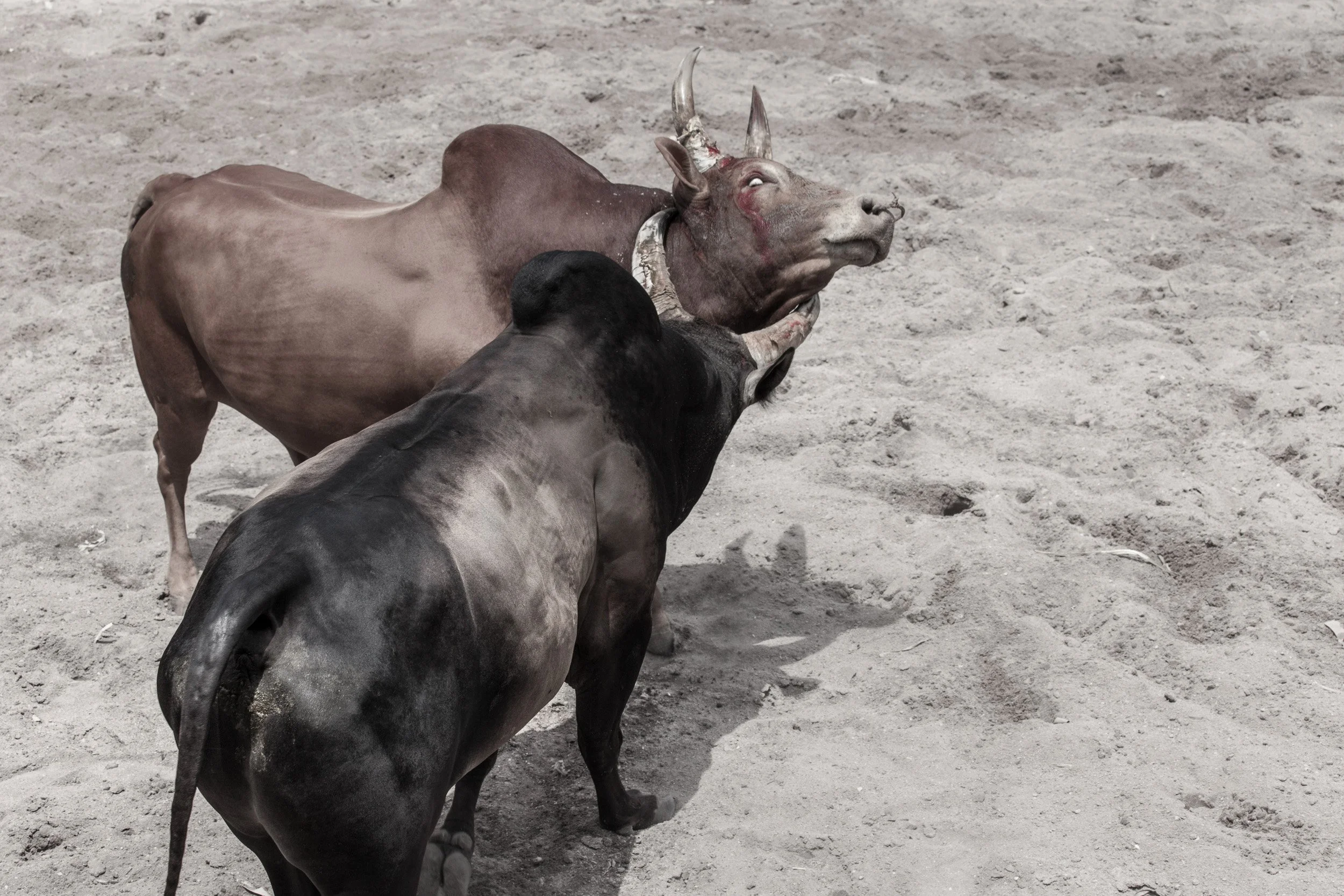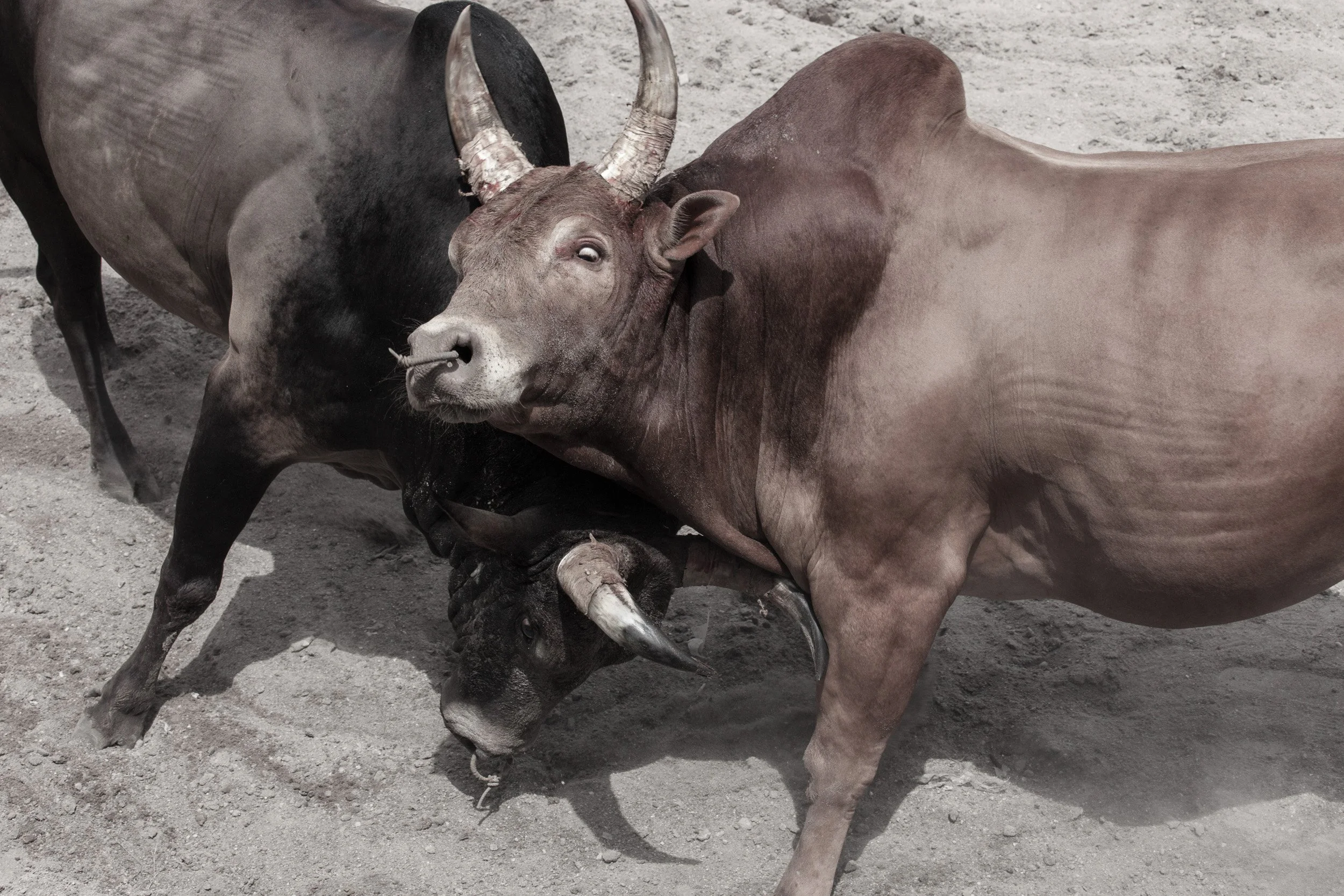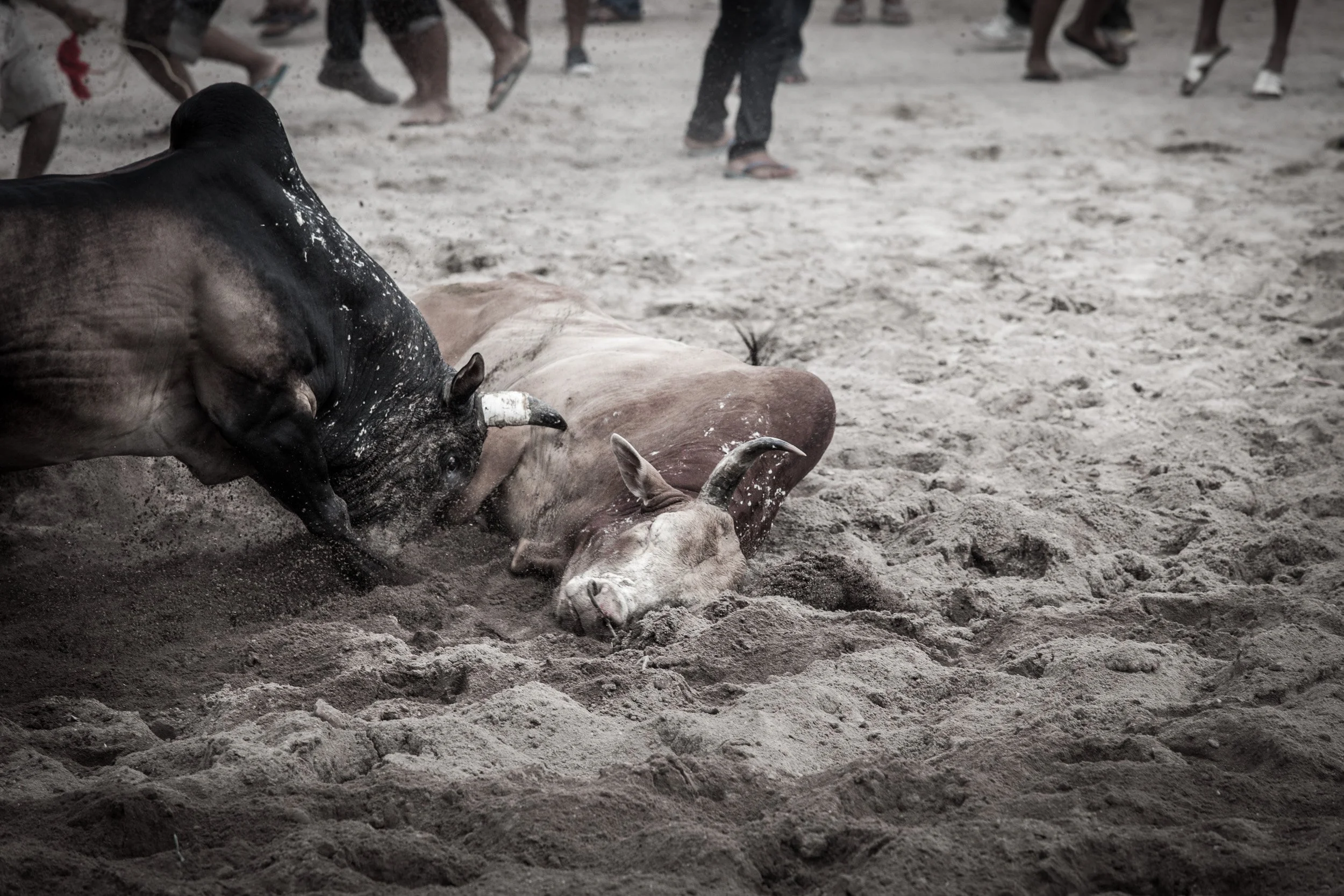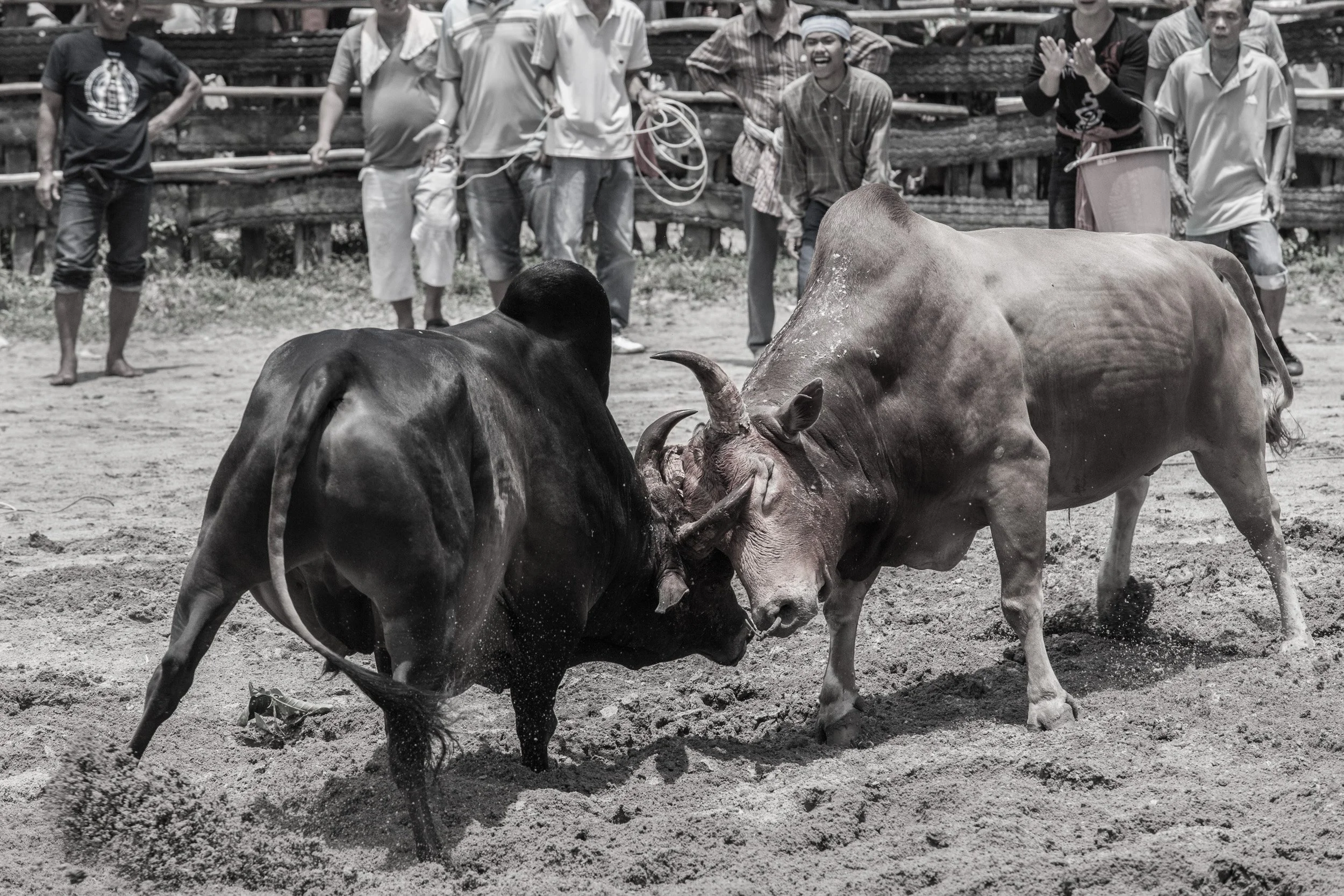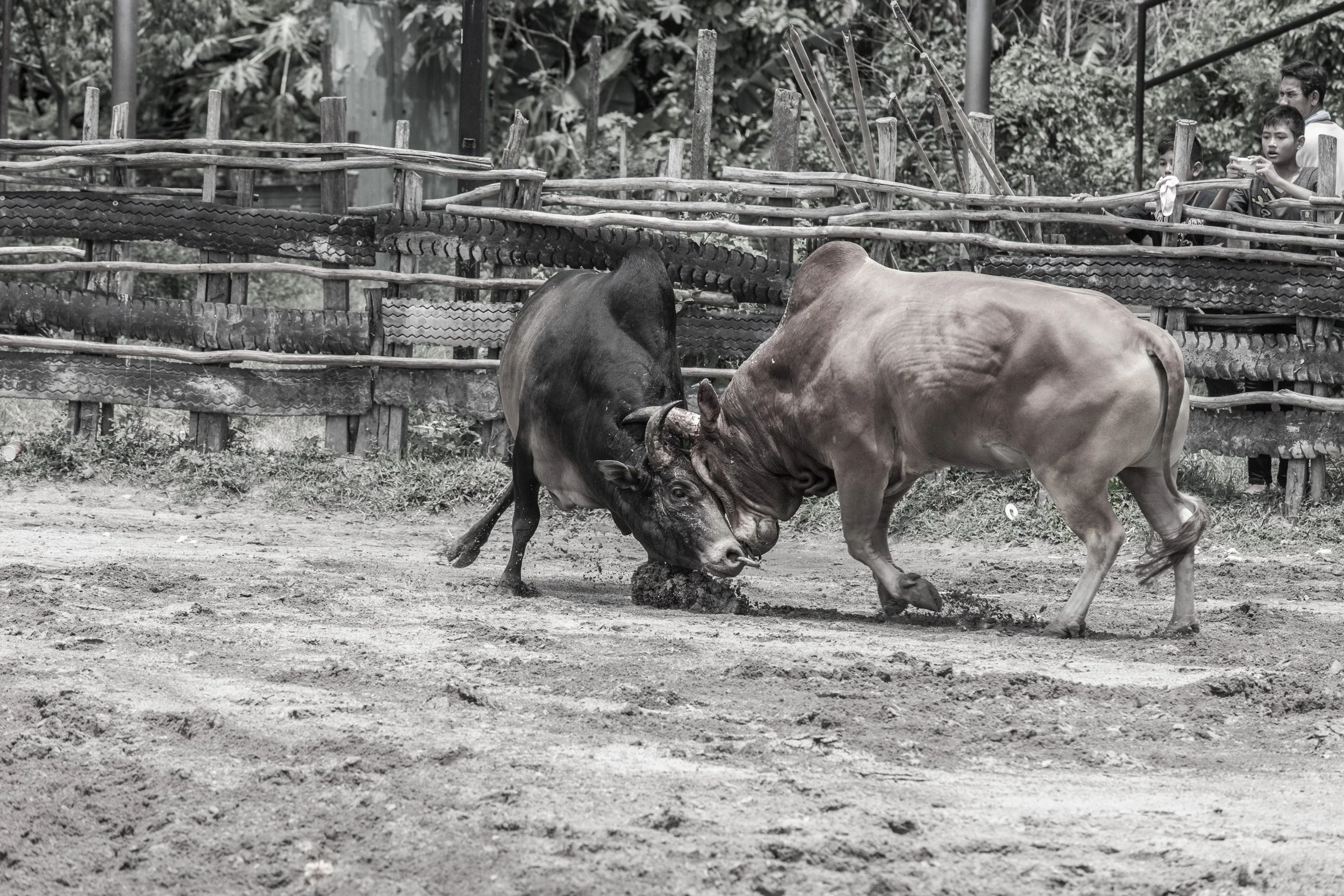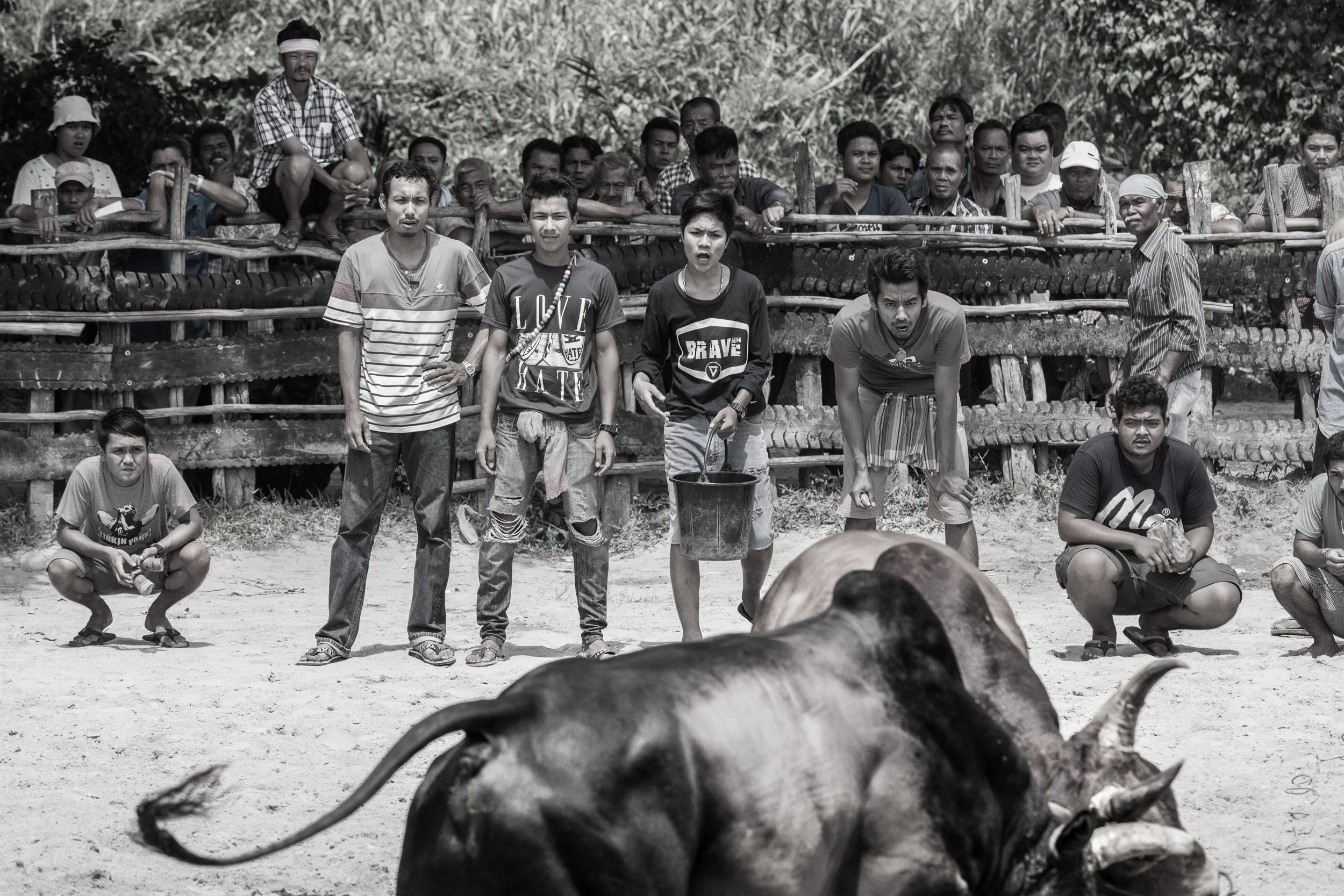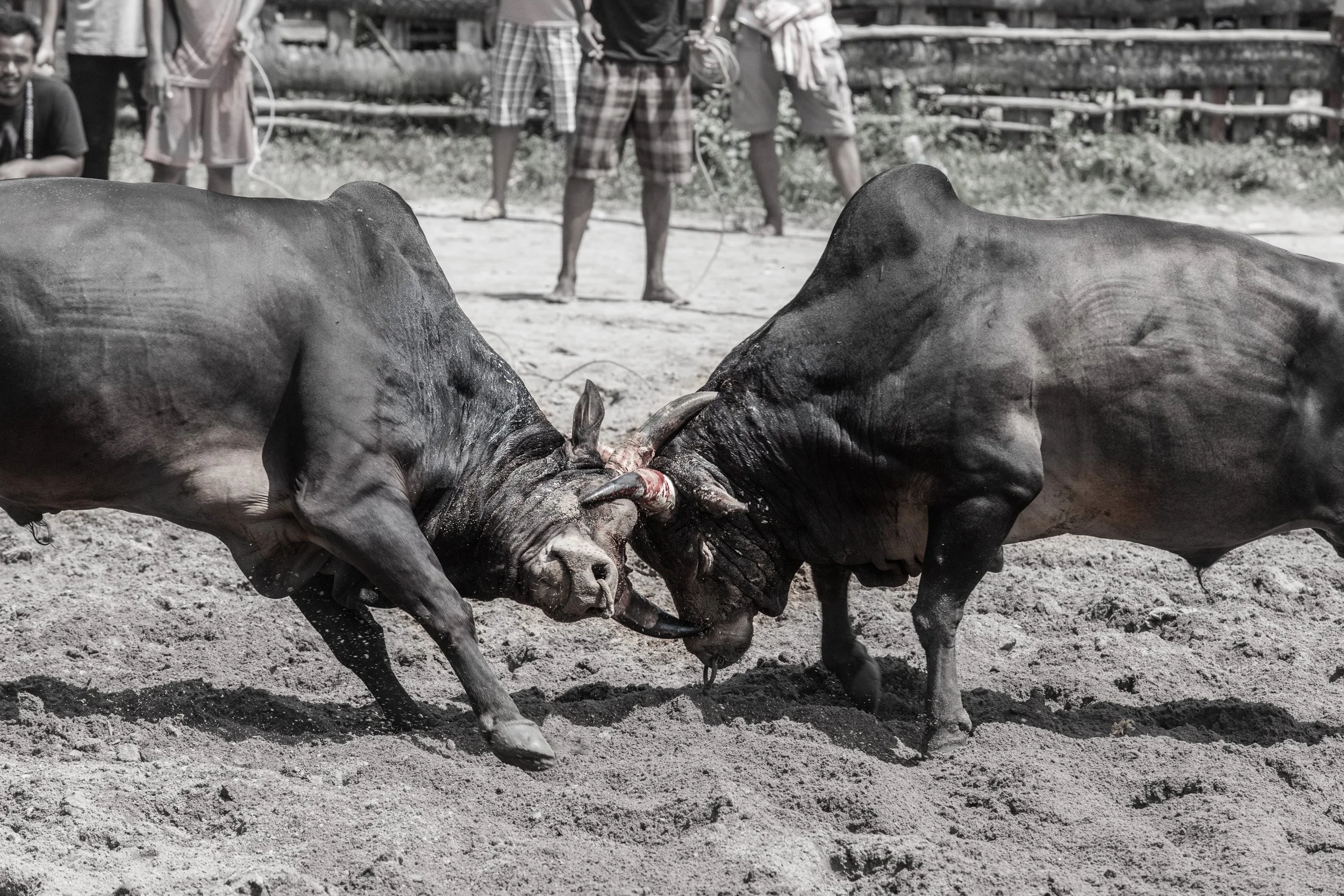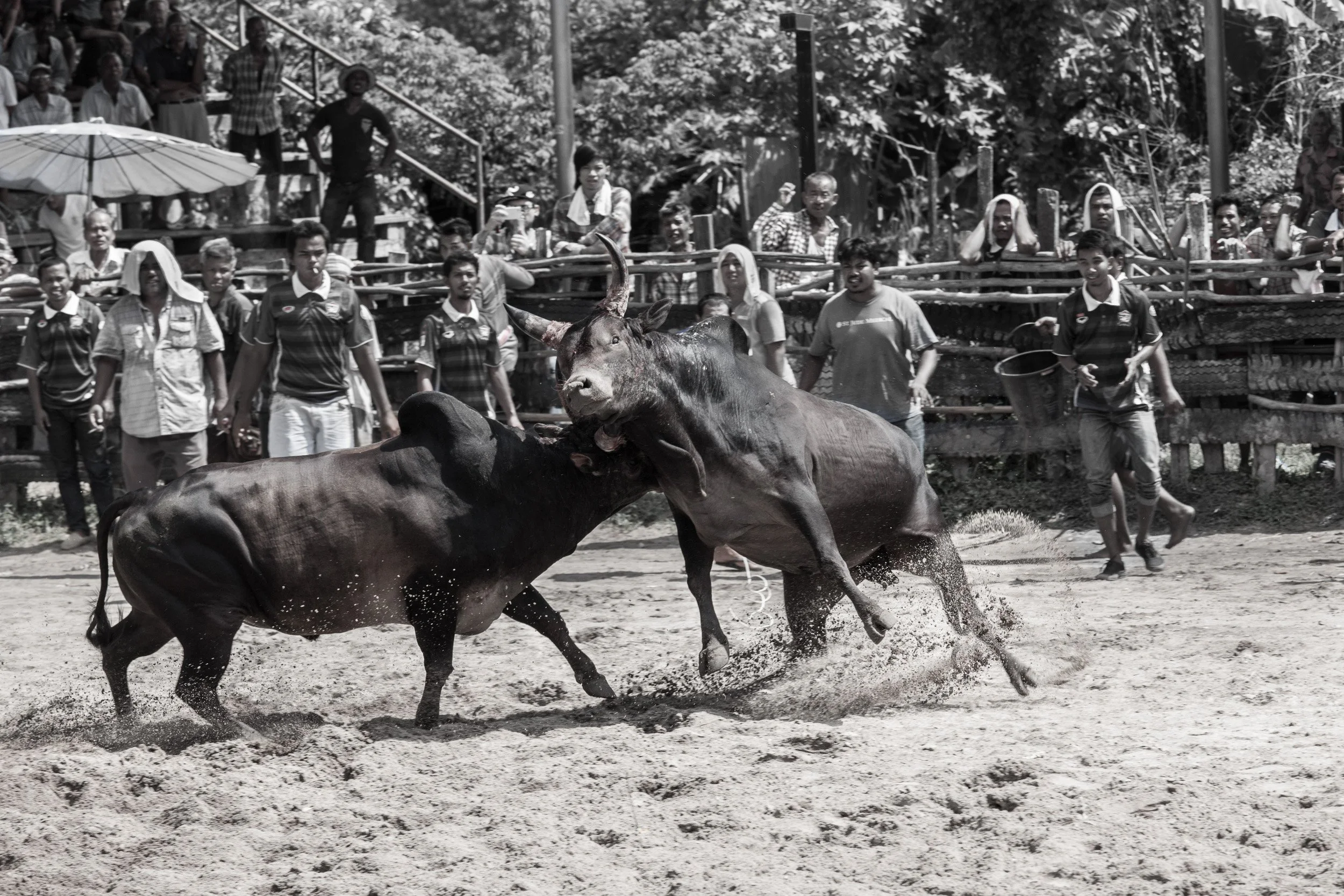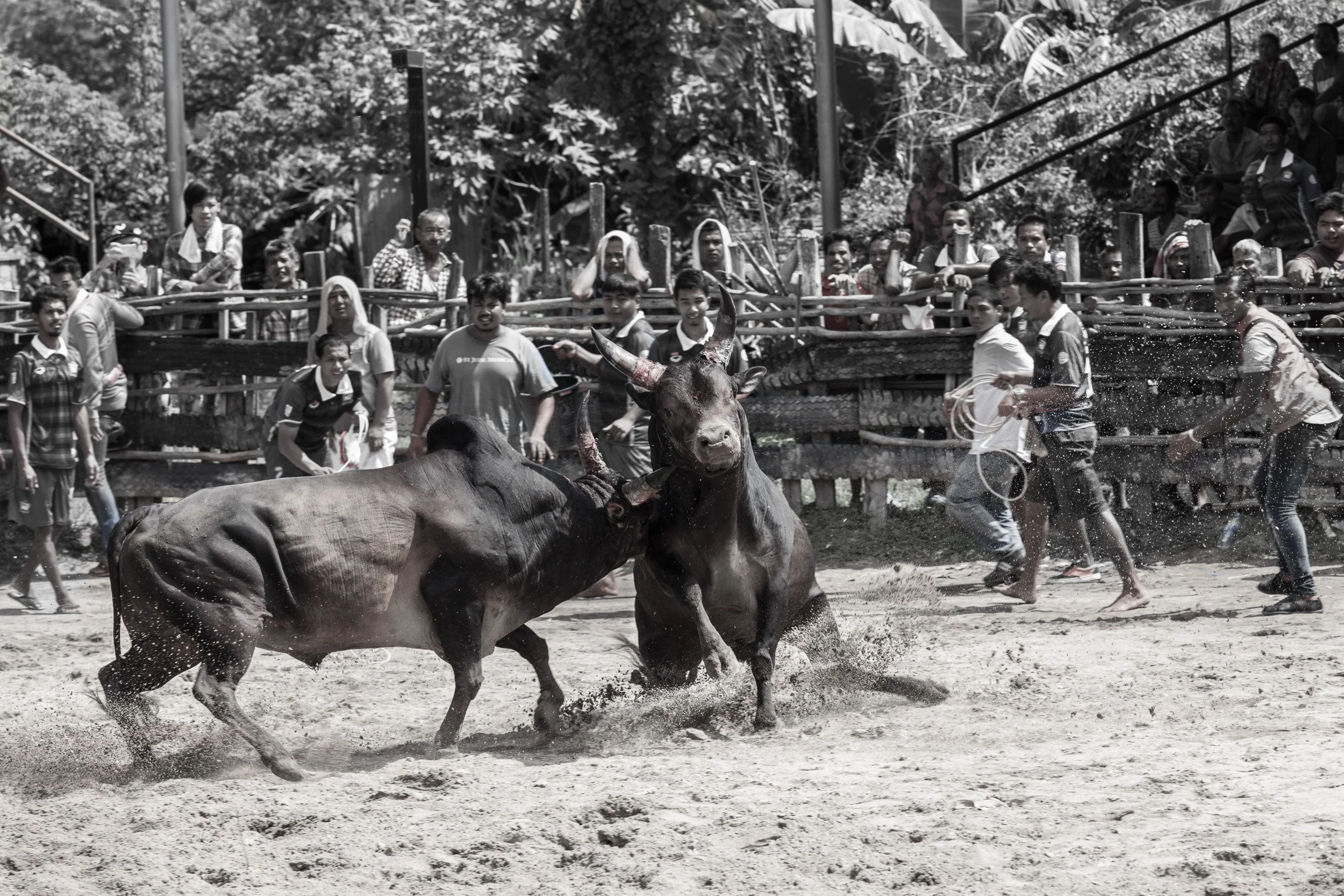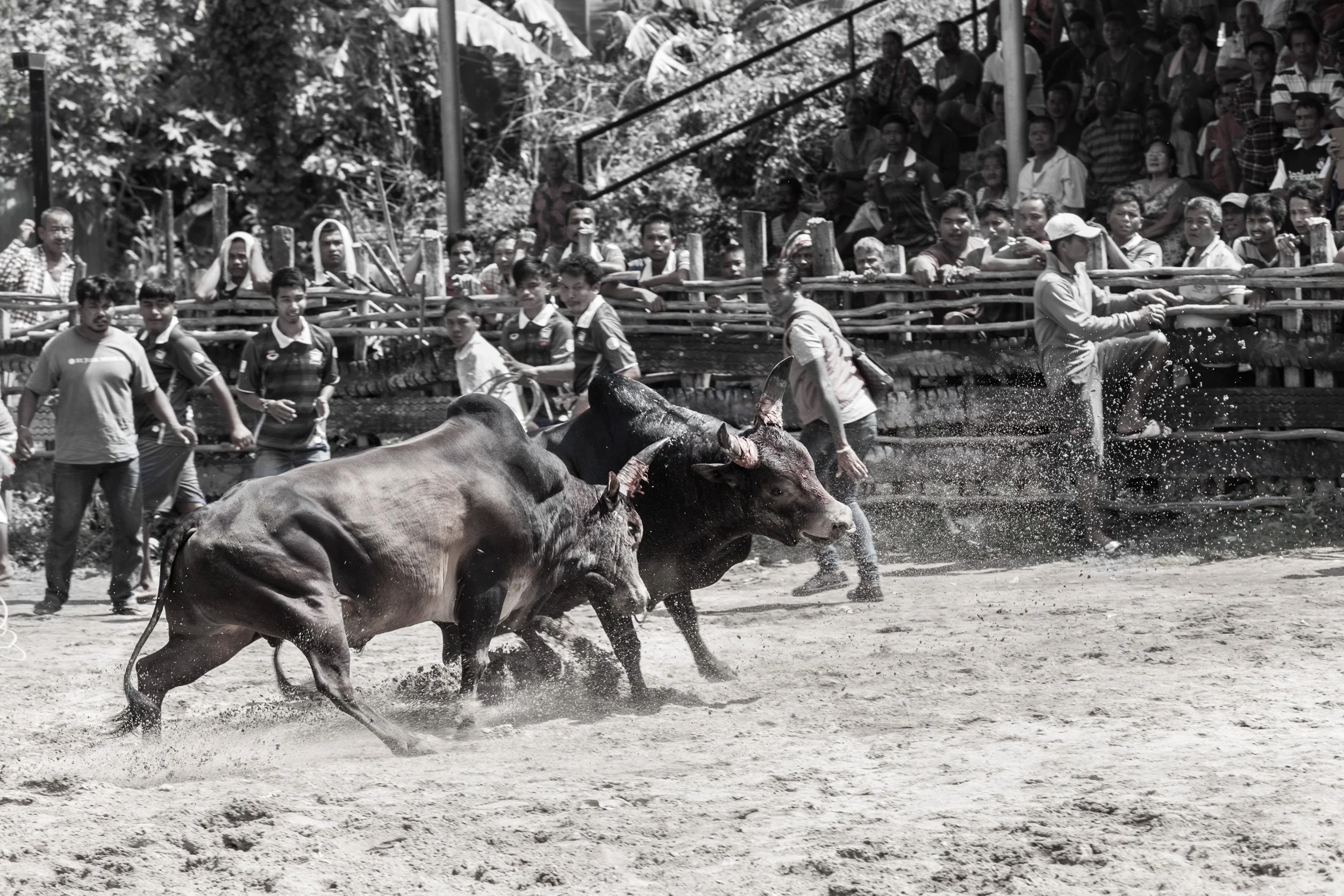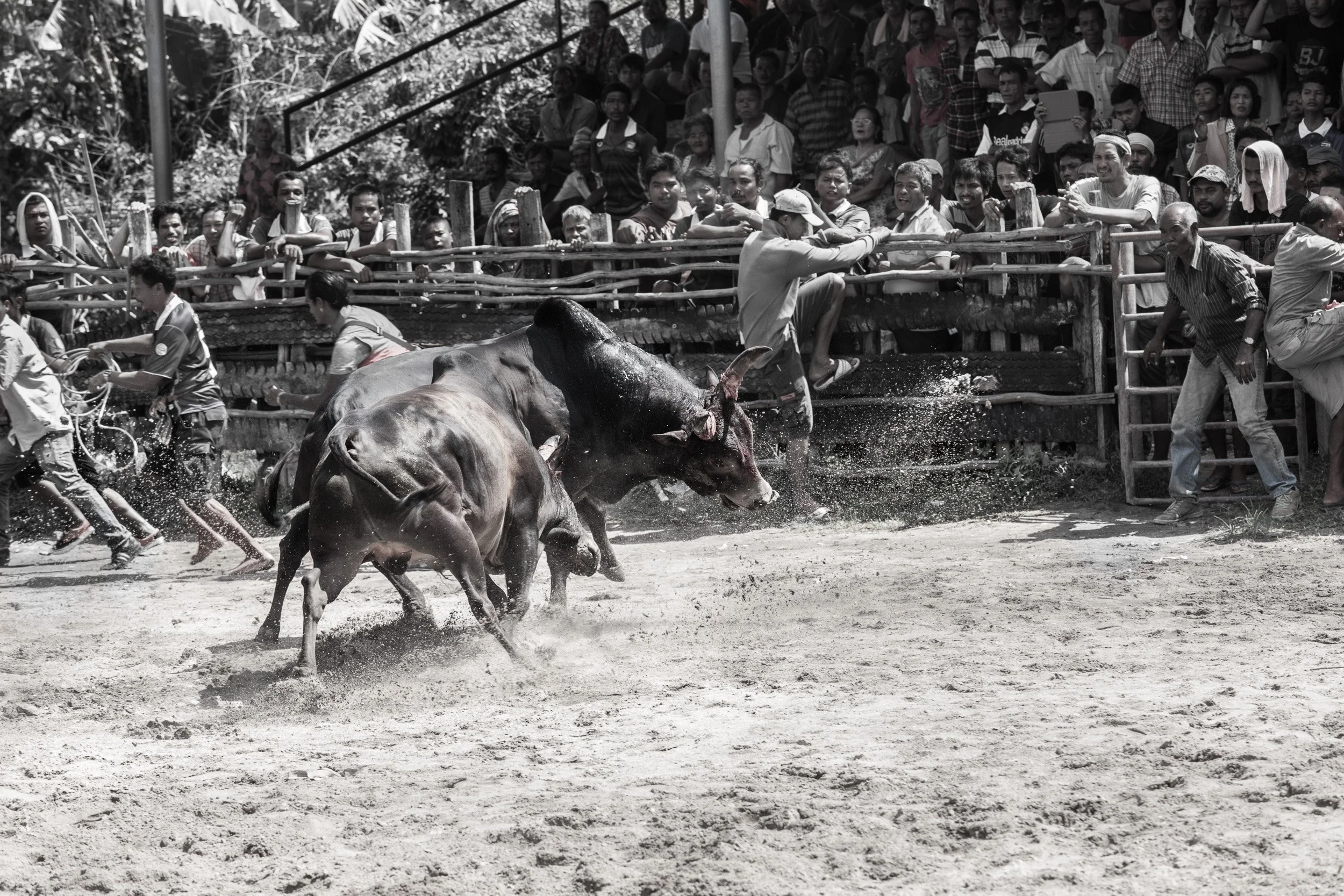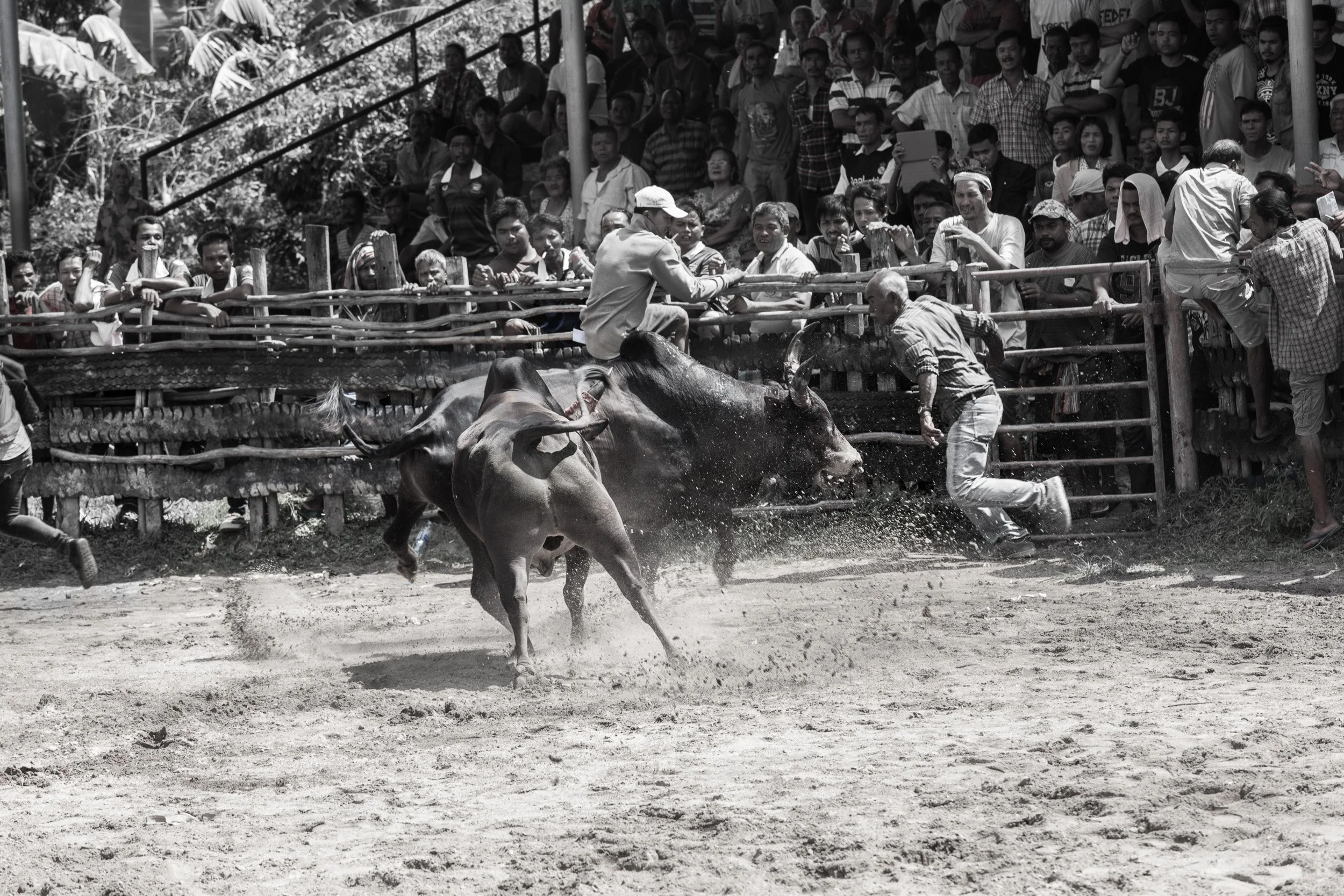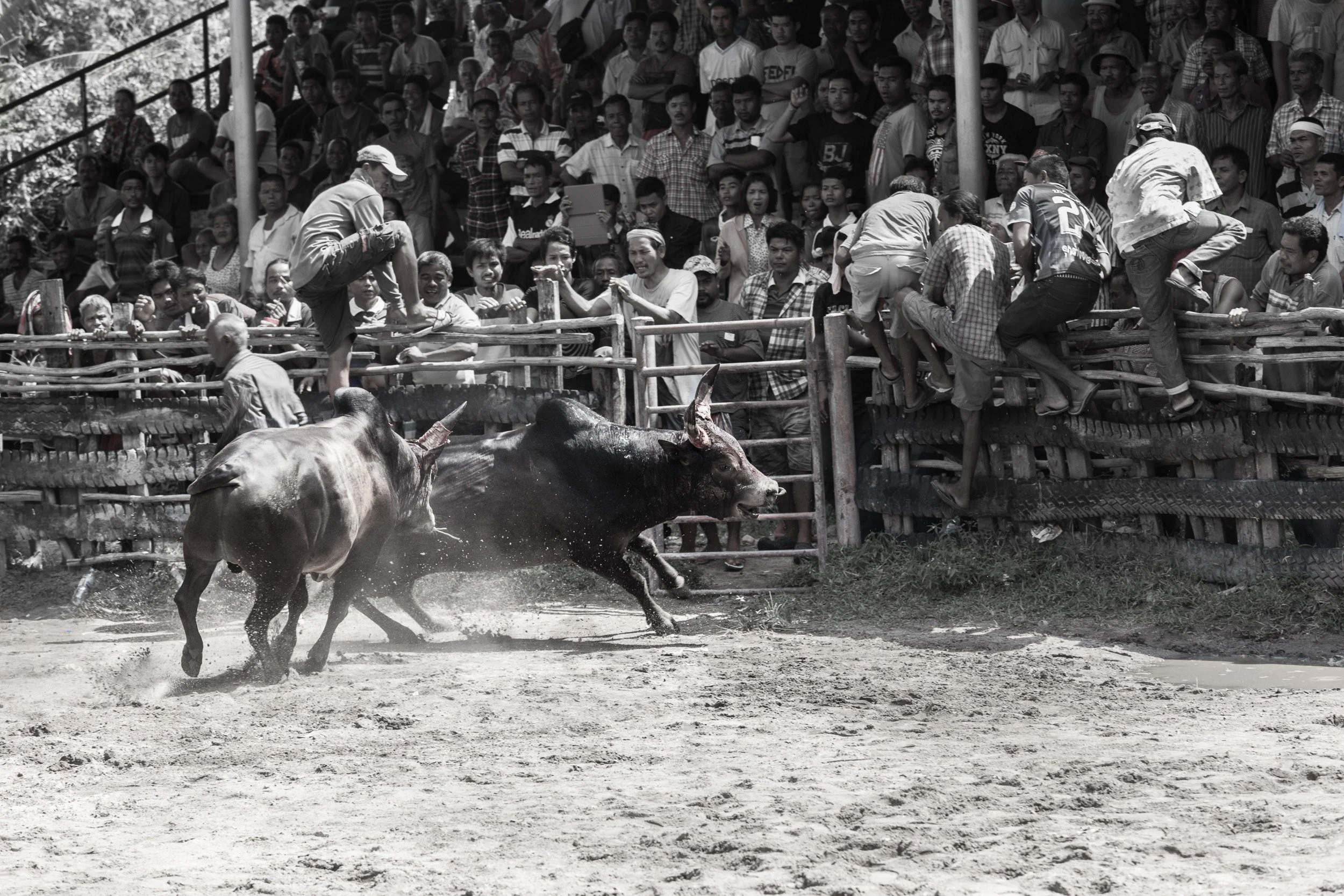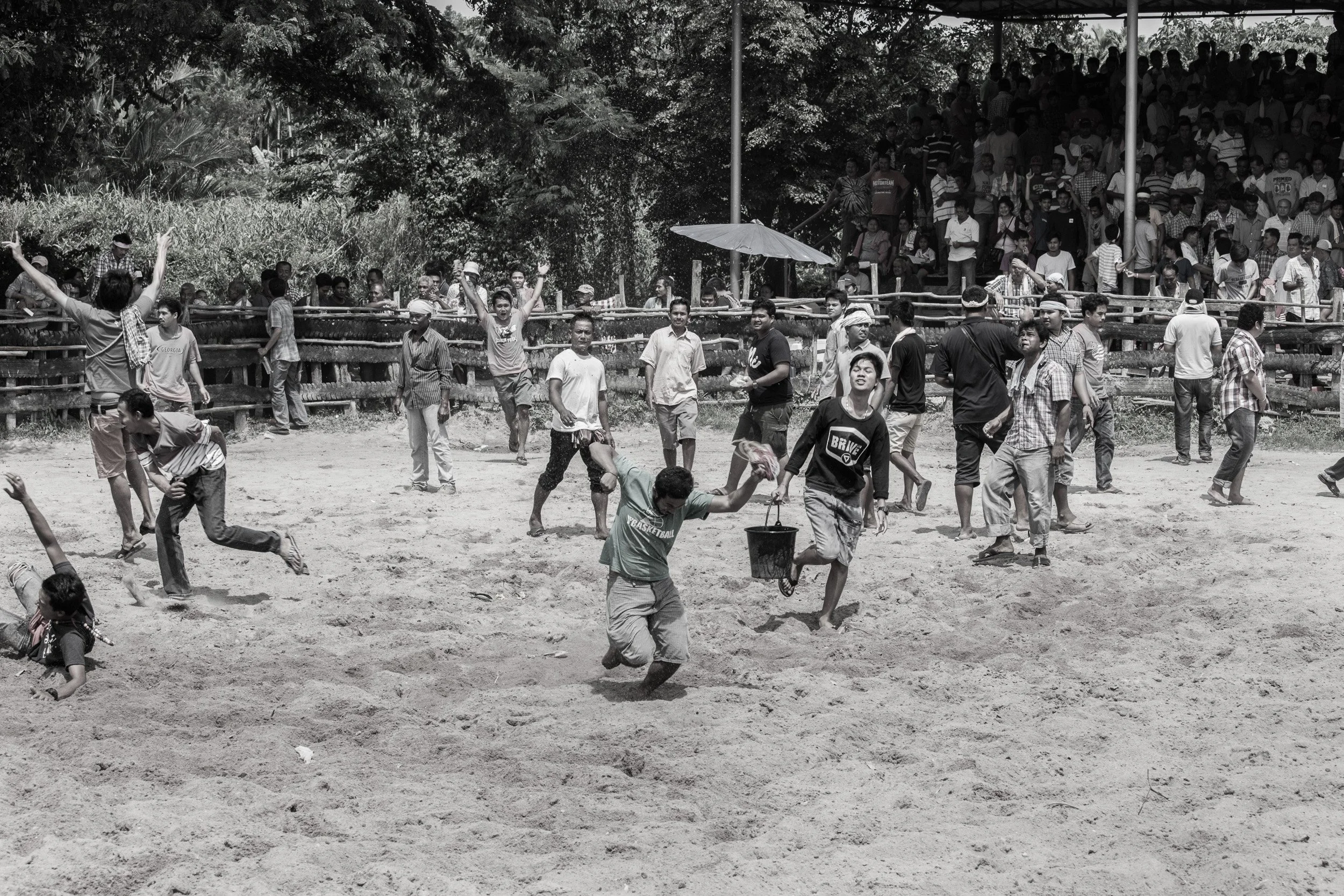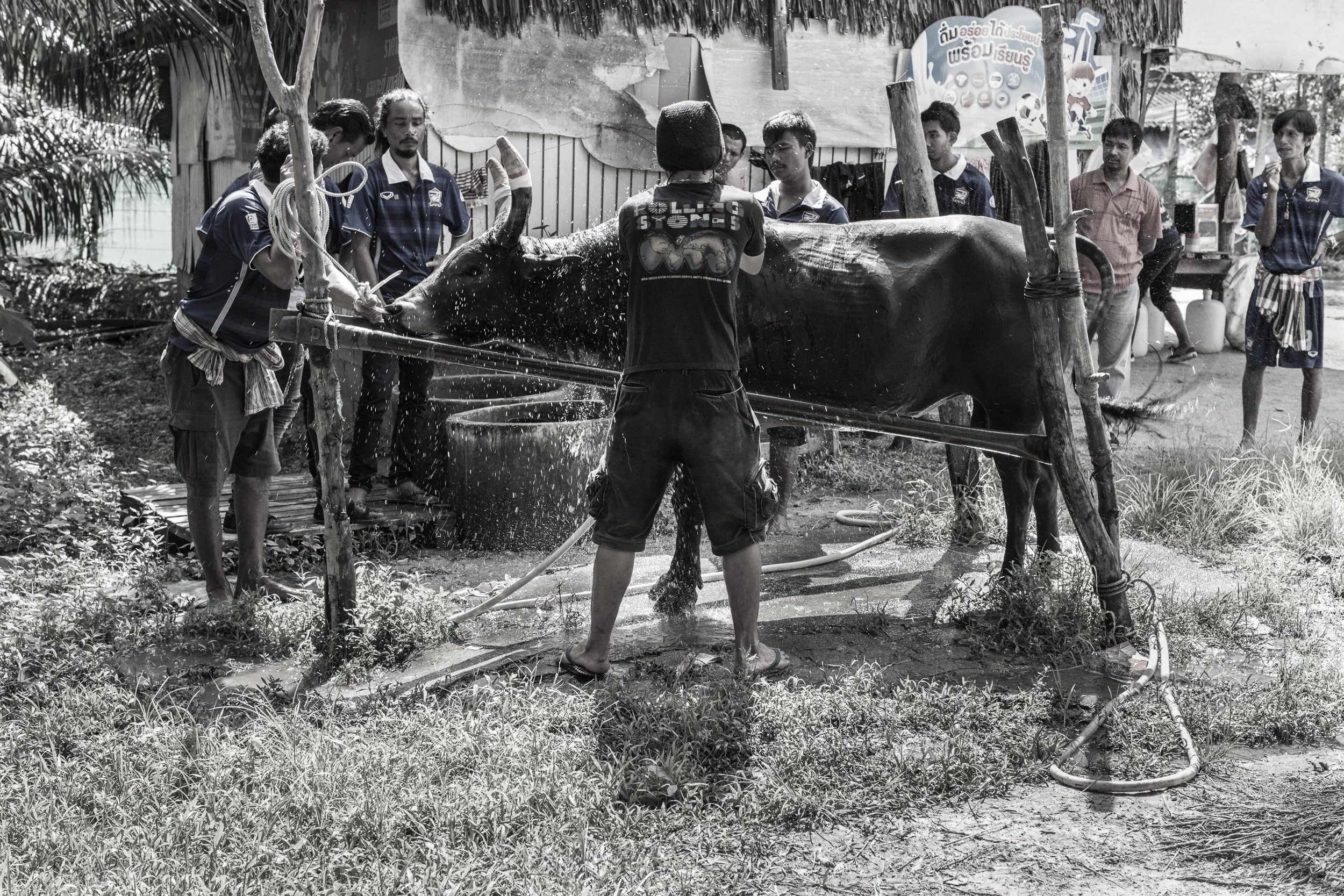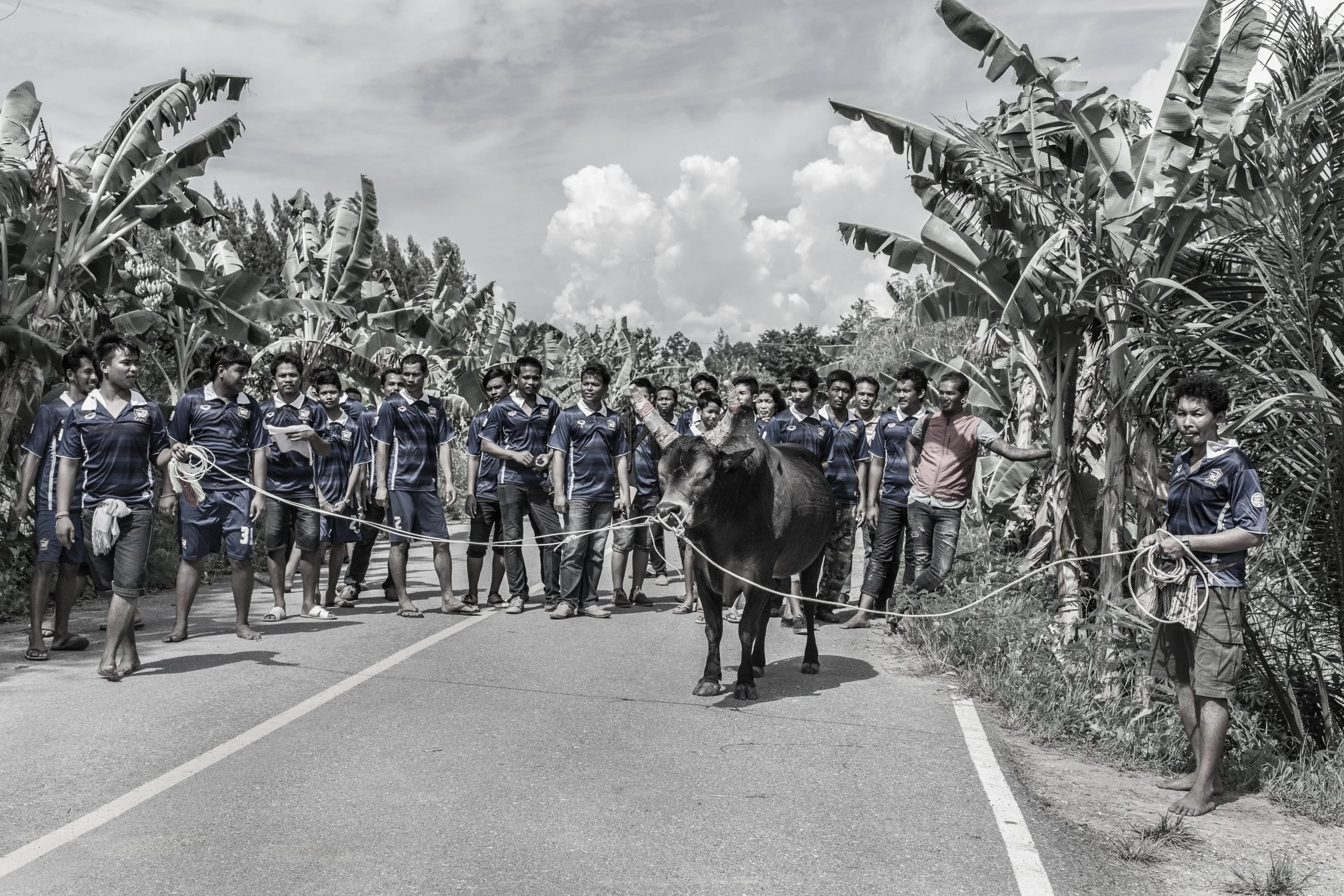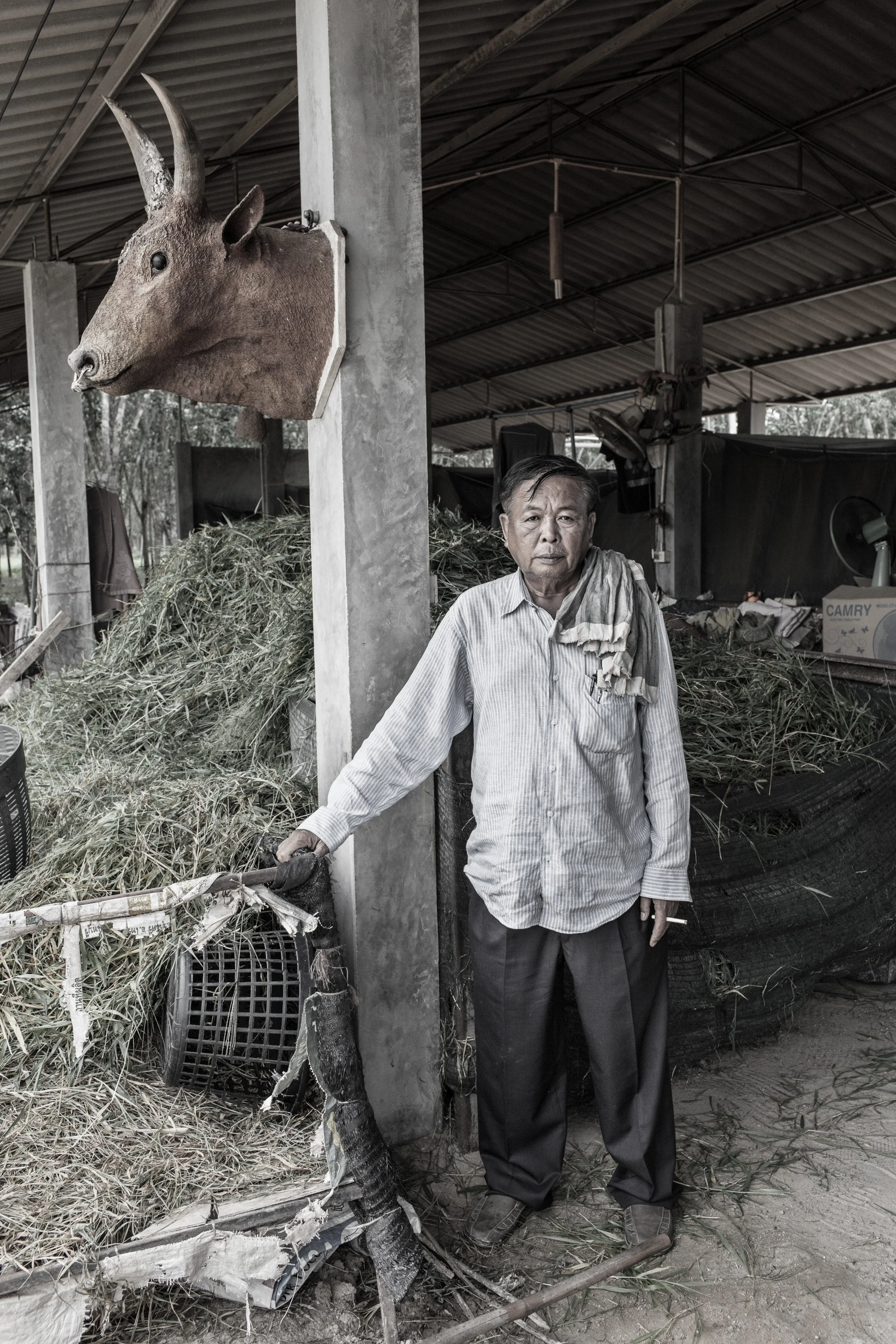Thai Bullfighting — Fight Day
About the Photographs
As you work your way through these images, you will likely be impressed both by how gentle as well as how ferocious these great animals seem. While some fighting bulls may exhibit human aggression, the majority do not and, in fact, may regularly be in close proximity to other fighting bulls during exercise walks or in adjacent stables with no excitement ensuing. The photographs present a narrative descriptive of the care and handling of the Thai fighting bull leading up to, during, and after the actual "fight day" when animal squares off against animal. Unlike cock fighting or dog fighting, owners of these beautiful creatures want their animals to exit a match alive and without grave injury. A bull would typically start fighting around five years old and continue in the ring for eight years or so. Viewing the images, keep in mind that no animal was seriously injured in any of these fights. Hard to believe the way they go at it. But an owner will "throw in the towel" if he sees his bull is clearly outmatched. Of course he wants the animal to take away a victory, but exiting the ring with the experience of a hard-fought match and with only minor injury is just fine.
Owning a prize fighting animal, and even more so a large licensed venue, is an indication of financial and political power. The sport, itself, binds together many small rural communities in Southern Thailand and continues to exist on the Malay Peninsula in the provinces of Nakhon Si Thammarat and Songkla.
An individual with the right bull, a bit of land, and know-how will pamper an animal giving it daily exercise sessions, feeding it premium forage, keeping it protected from insects. A common joke is that a bull owner will take better care of his animal than of his wife and kids. Within small rural communities any number of individuals raising animals routinely meet both to train their bulls and to judge their natural aggression. Not all bulls want to fight. When villagers identify a strong, fast, aggressive animal in their stables, that's the bull that is trucked to a large regional gathering where a matchmaker pairs animal to animal. They'll meet in the ring in the near future during the two or three days a month when fights are scheduled. Akin to prize fighting in the boxing ring, less experienced bulls fight earlier in the day and the big purse match occurs as the finale. A lot of money changes hands through the victor's purse, wagers made — you'll see people placing and modifying bets as a match unfolds — and by way of the many products and services — parking, entrance fees, food, drink, tie-downs, green forage, etc. — sold in the semi-permanent and pop-up booths occupying the land surrounding the actual ring. Residents of a village that sends a bull will often accompany the animal chosen from their midst. They'll pool funds to finance the entry fee and to place bets. A winning bull of experience and known ferocity — that "main event" end-of-the-day bull — can bring its sponsors tens of thousands of dollars.
Bull owner hopeful he has raised a prize winning animal
Owner and bull walking through trees
Relaxing couples staying near their fighting bull
Stable hand affectionate with fighting bull
Small boy with a young fighting bull
Adding horn-lengtheners to bull to increase his chances in the fighting ring
Administering water to a bull in training
Gathering a basket of forage to feed a fighting bull
Bull at feed trough
Bulls in early morning with smudge pots to ward off mosquitoes
Entering an open field for regular exercise
Common exercise area for local fighting bull owners
Traveling across field for exercise with fighting bull
Walking along road for exercise with fighting bull
Heading to small local fighting ring for controlled training
A small local training ring
Local training ring with children playing on unoccupied bleachers as fighting bulls arrive
Owner offloading his animal for controlled sparring
Bull anxious to put his horns to use
Animal thrusting horn into soft ground
Local men watching and discussing the bulls brought by their neighbors for trial fights
Men watching controlled fights between local area bulls
Controlled sparring between two local bulls in test for aggression
Local men and boys watching a controlled match to select the superior village bull
Regional gathering of men and animals selected for most aggression and fighting skill
A matchmaker will pair bulls of similar size and experience to return and meet in the ring during fight day
Fight day: The large regional ring has filled with spectators from local villages
An animal aggressively digs its horns into the dirt before his competitor enters the ring
Concerned face before the animals meet
Bull is prepared at edge of ring just before he engages his competitor
Wiping down the horns prior to the fight
Animals engaged and judging respective strength in center ring
First blows are struck with owners' crews still crowding about the attacking animals
Animal lifted by a strong well-leveraged charge
Heads to the ground in a corner of the ring
Animals engaging a-1
Animals engaging a-2
Animals engaging a-3
Animals engaging a-4
Animals engaging a-5
Animals engaging a-6
Animals engaging a-7
Animals engaging a-8
Worried looks and placing a bet on an evolving fight
Bowled over and pinned down b-1
Bowled over and pinned down b-2
Bowled over and pinned down b-3
Placing a bet on a fight with two animals reluctant to engage
Struggling for dominance c-1
Struggling for dominance c-2
Struggling for dominance c-3
Struggling for dominance c-4
Struggling for dominance c-5
Struggling for dominance c-6
Struggling for dominance c-7
Struggling for dominance c-8
Struggling for dominance c-9
Struggling for dominance c-10
Struggling for dominance c-11
Woman with eyes closed supporting small child
Head to head d-1
Head to head d-2
Head to head d-3
Team owners cheering on their animal
Victor clearing the ring e-1
Victor clearing the ring e-2
Victor clearing the ring e-3
Victor clearing the ring e-4
Victor clearing the ring e-5
Victor clearing the ring e-6
Victor clearing the ring e-7
Victor clearing the ring e-8
Victor clearing the ring e-9
Victor clearing the ring e-10
Winning team jubilant over their bull's victory
After fight wash down and first aid
Winning team returning to stable with their victorious bull
Respected owner and trainer with head of a past prize fighting bull
